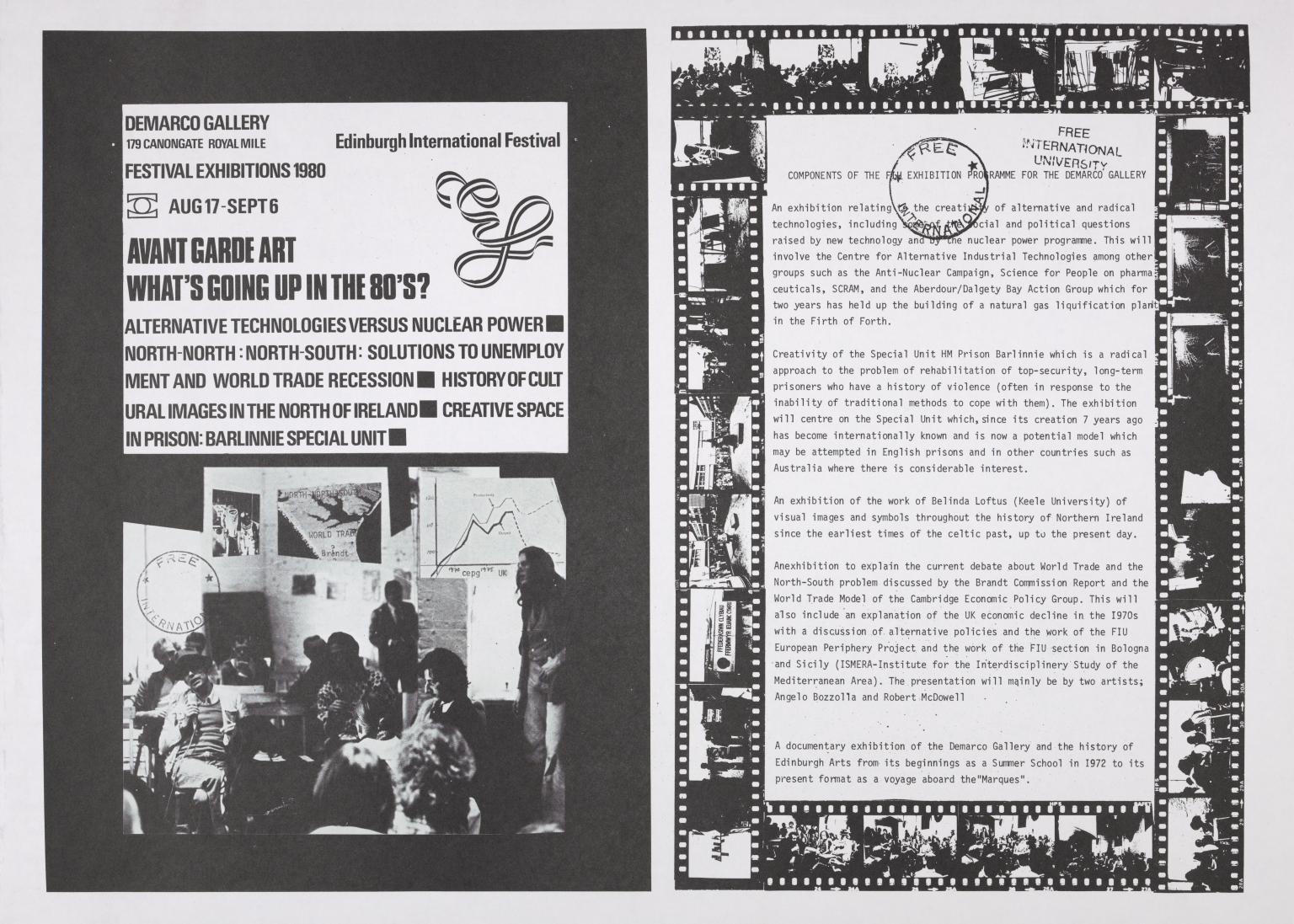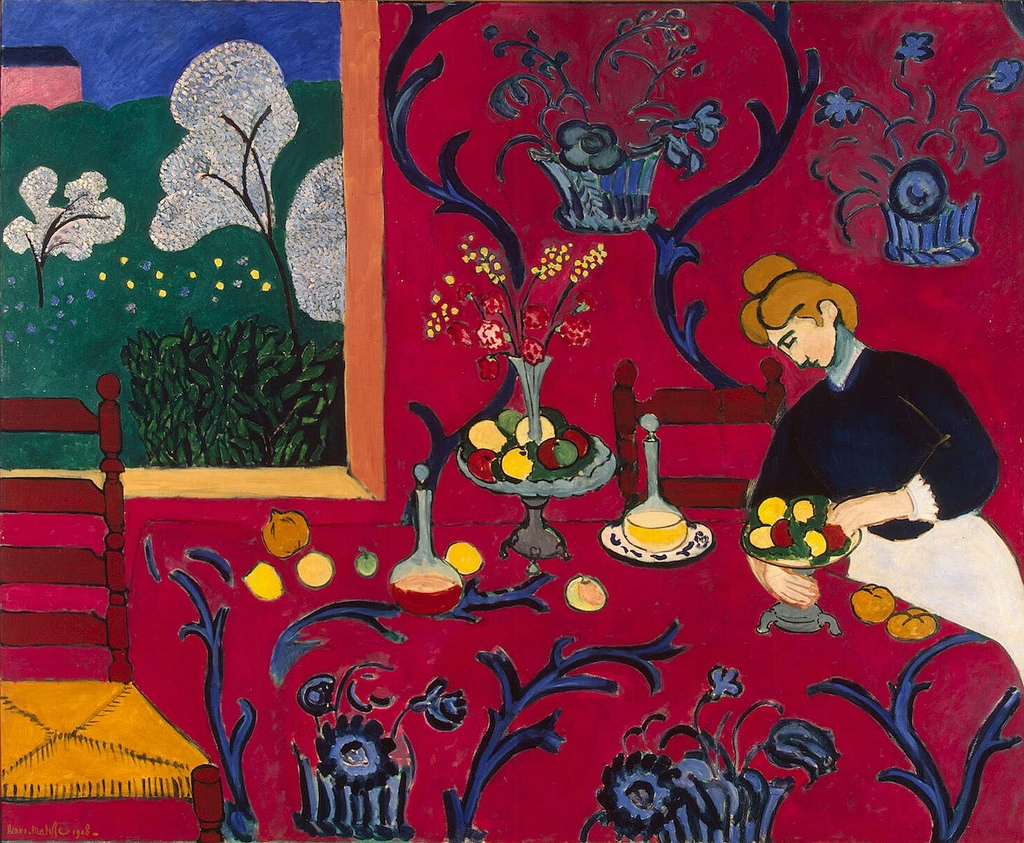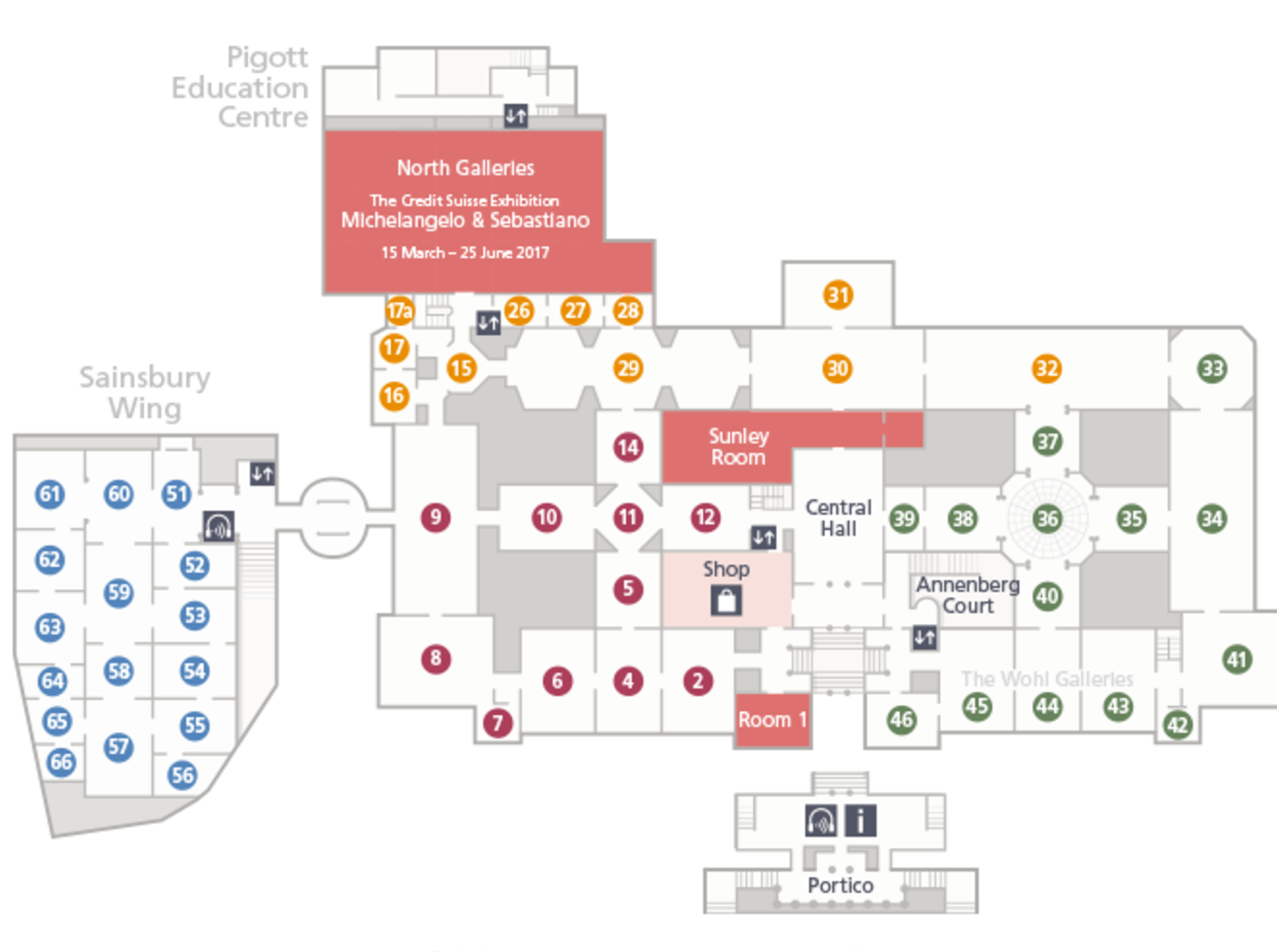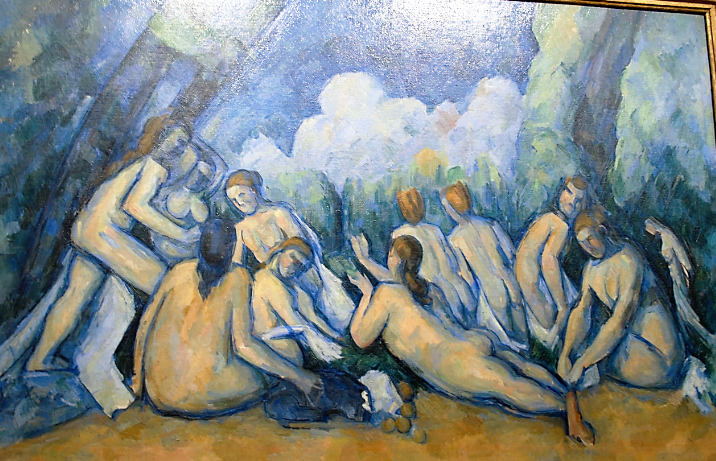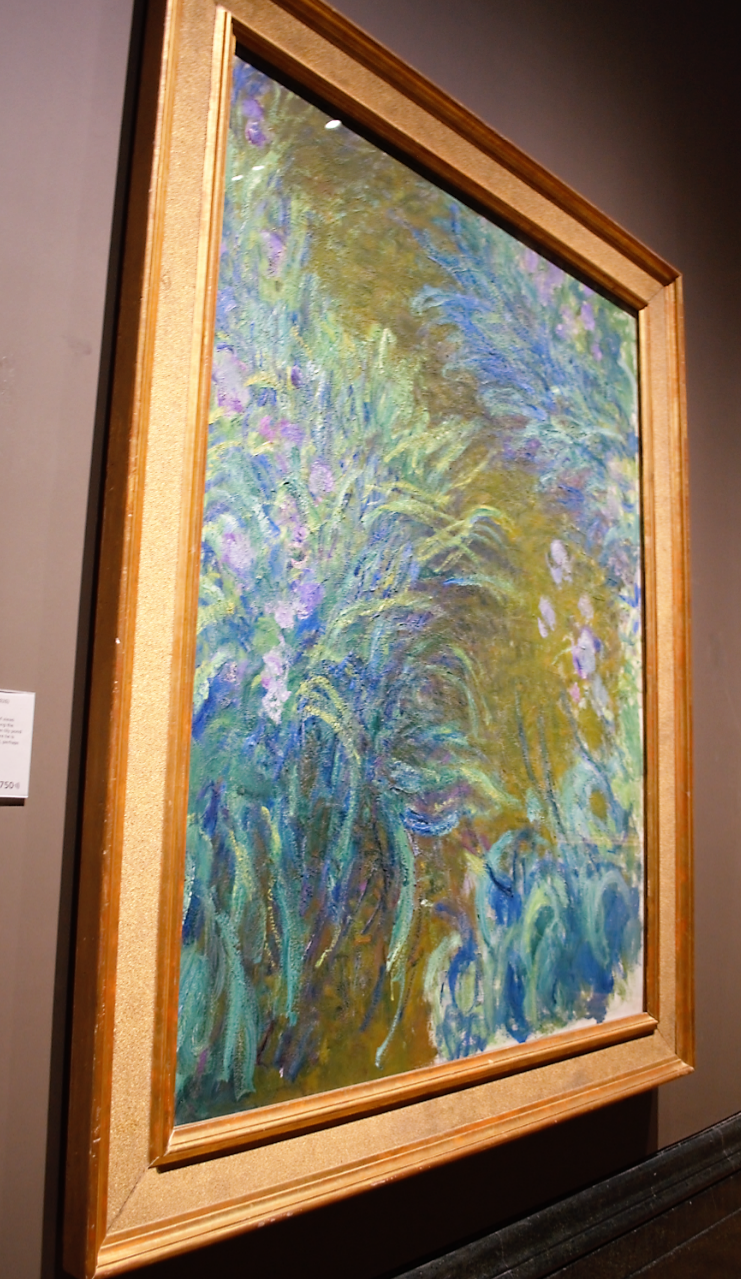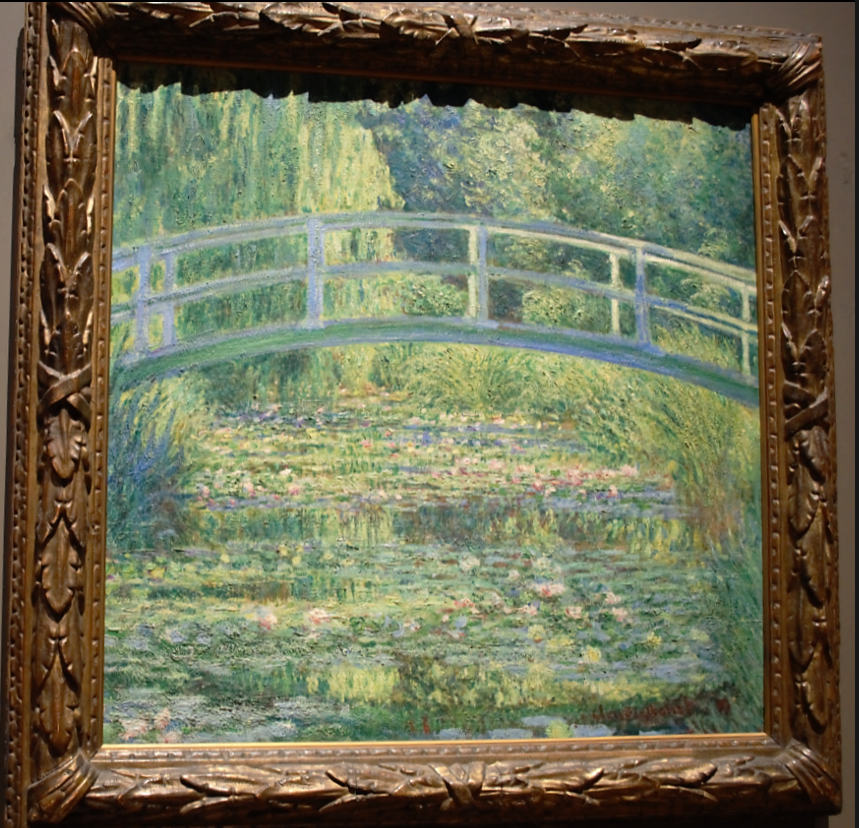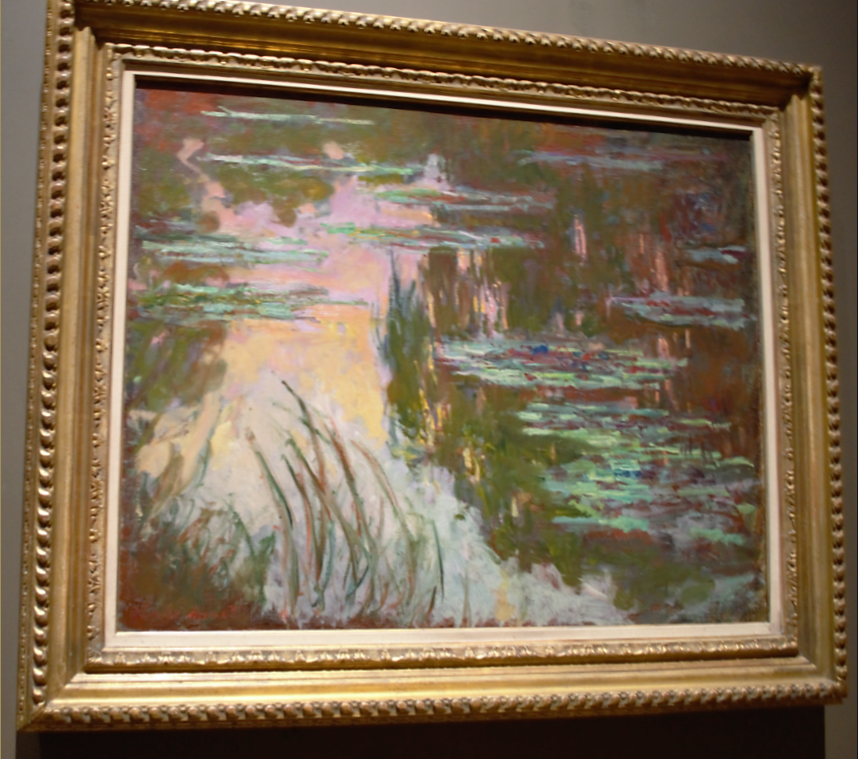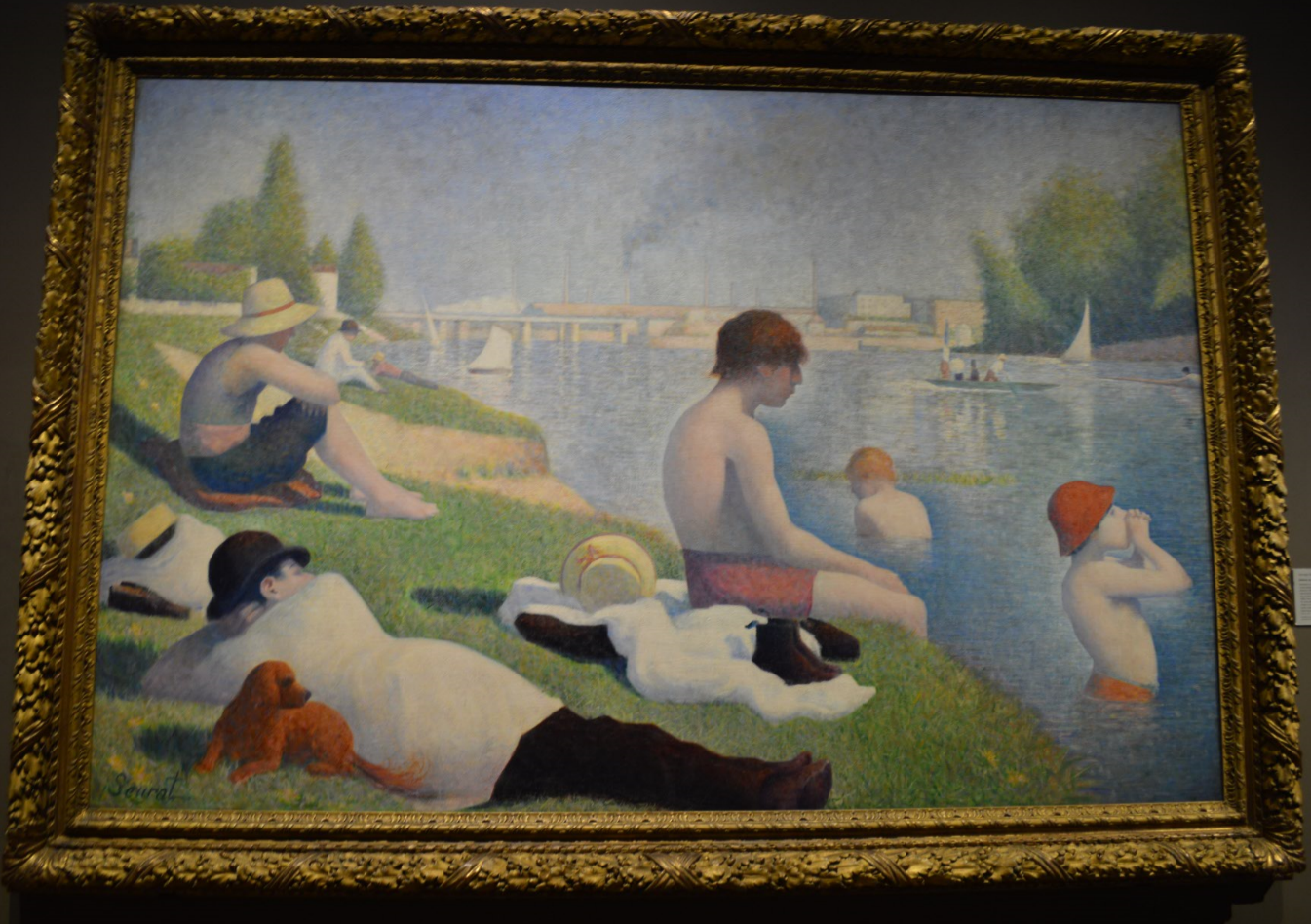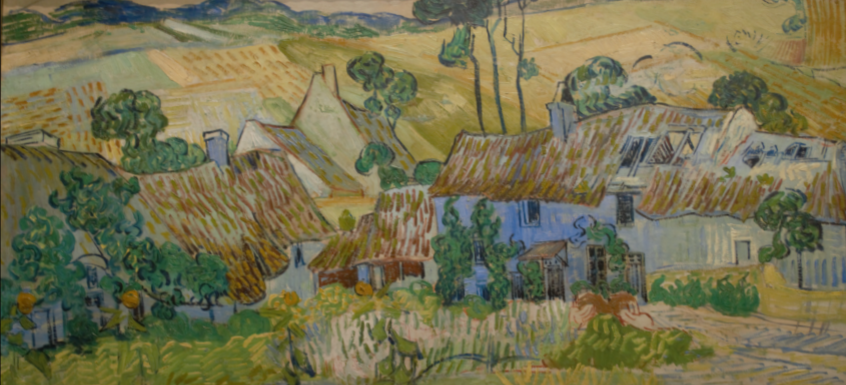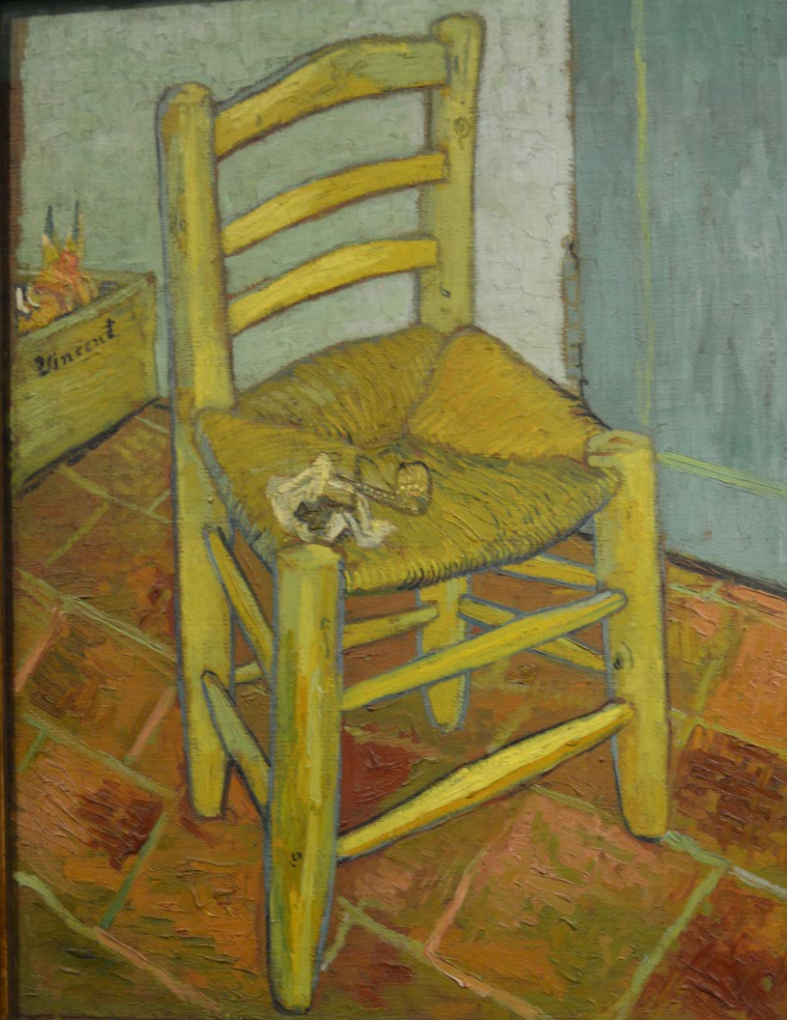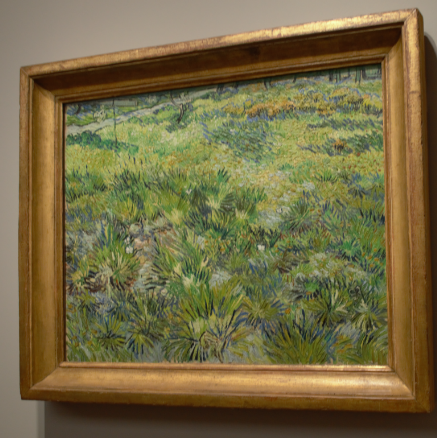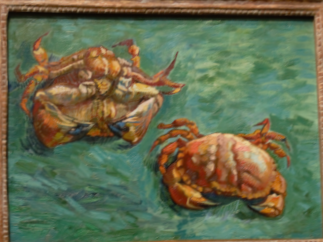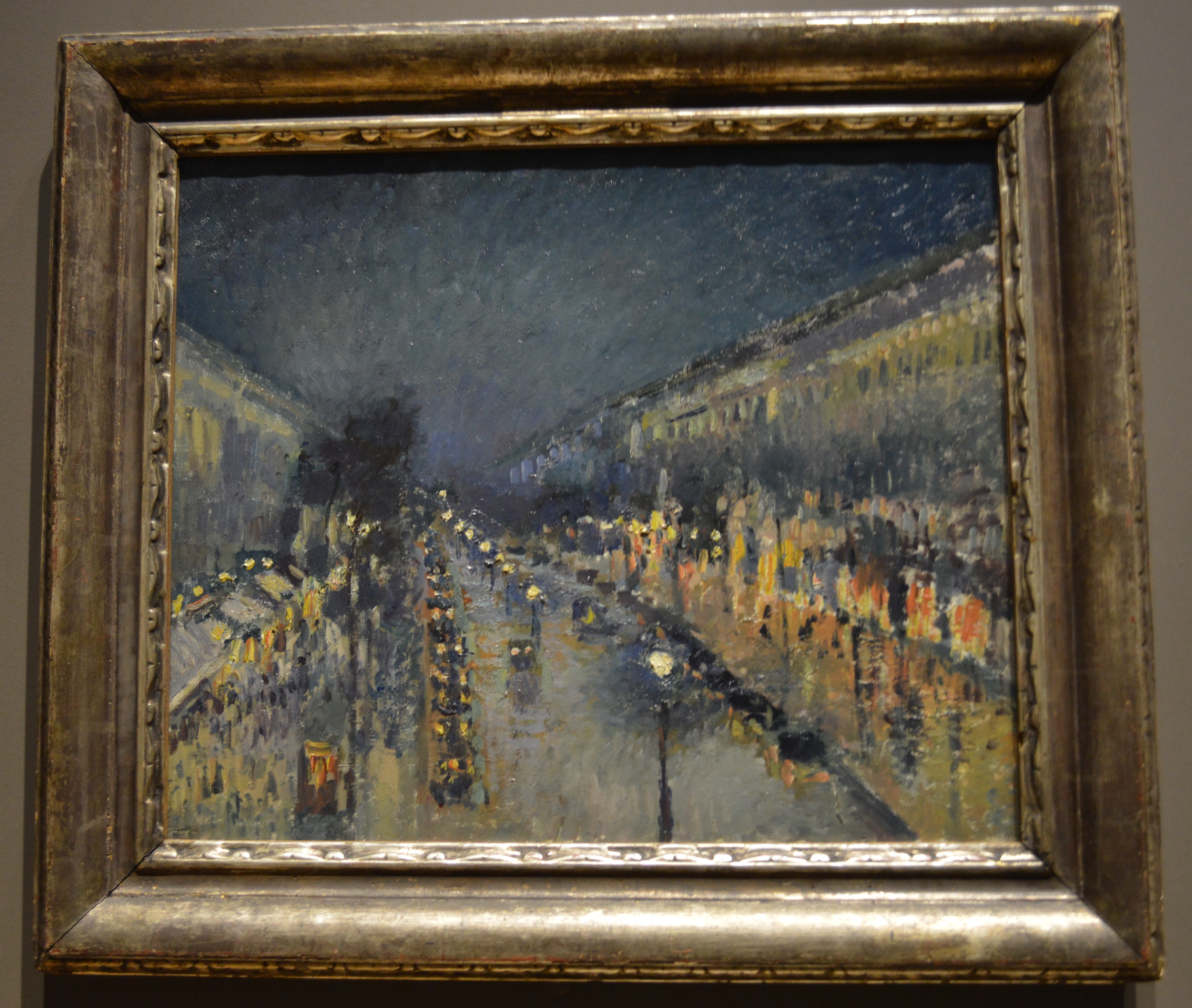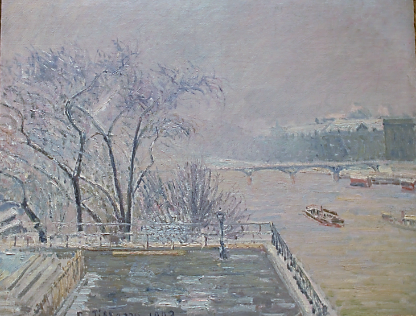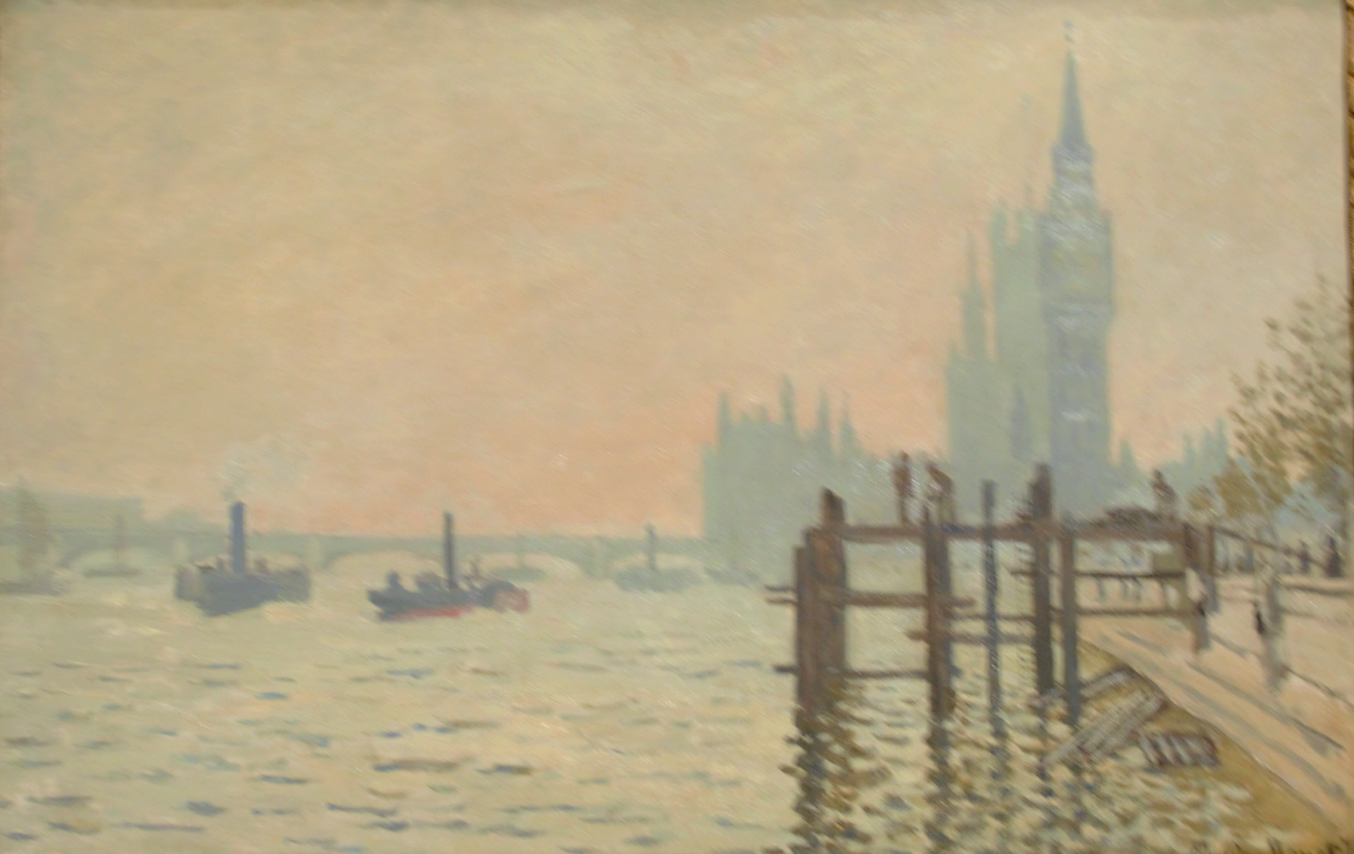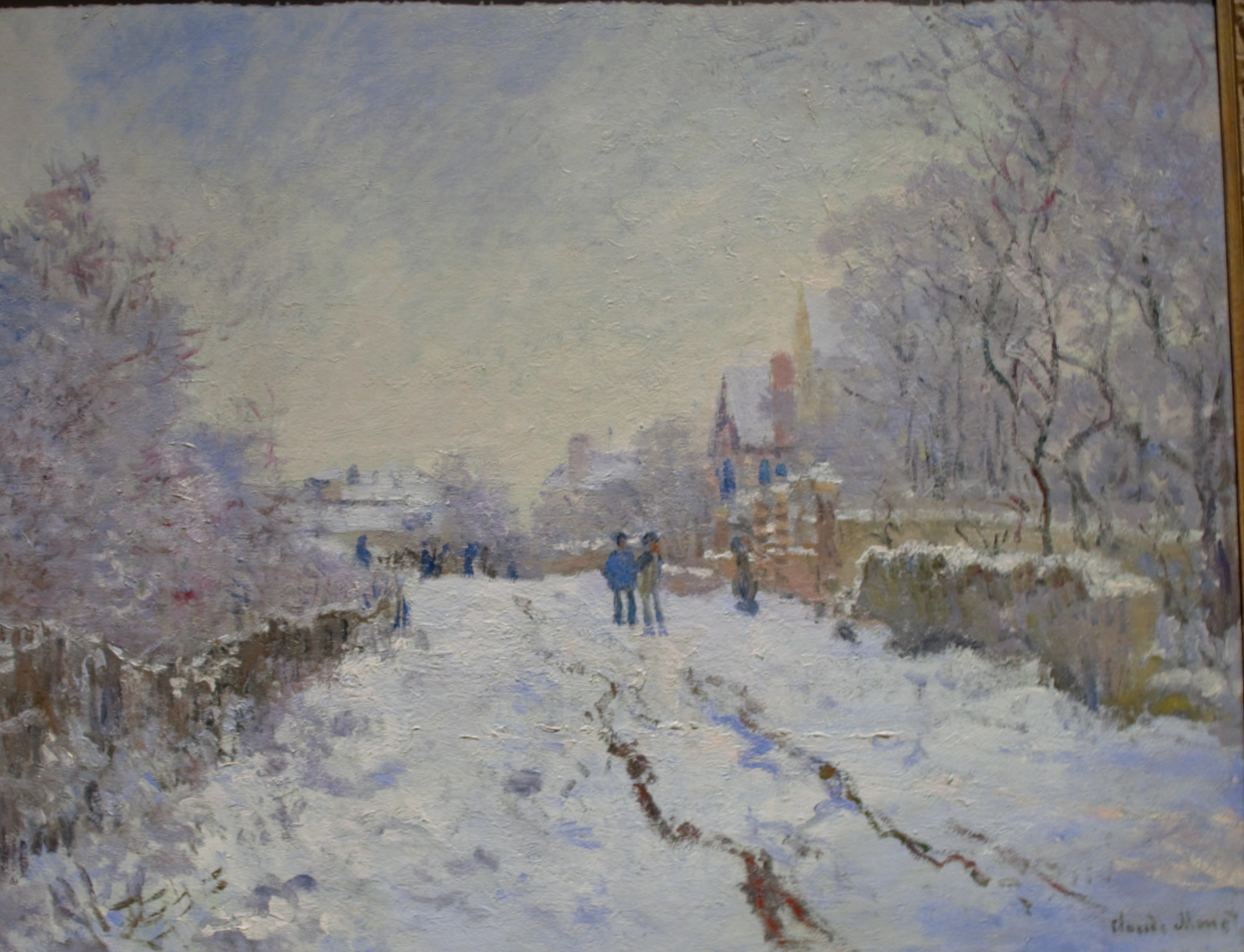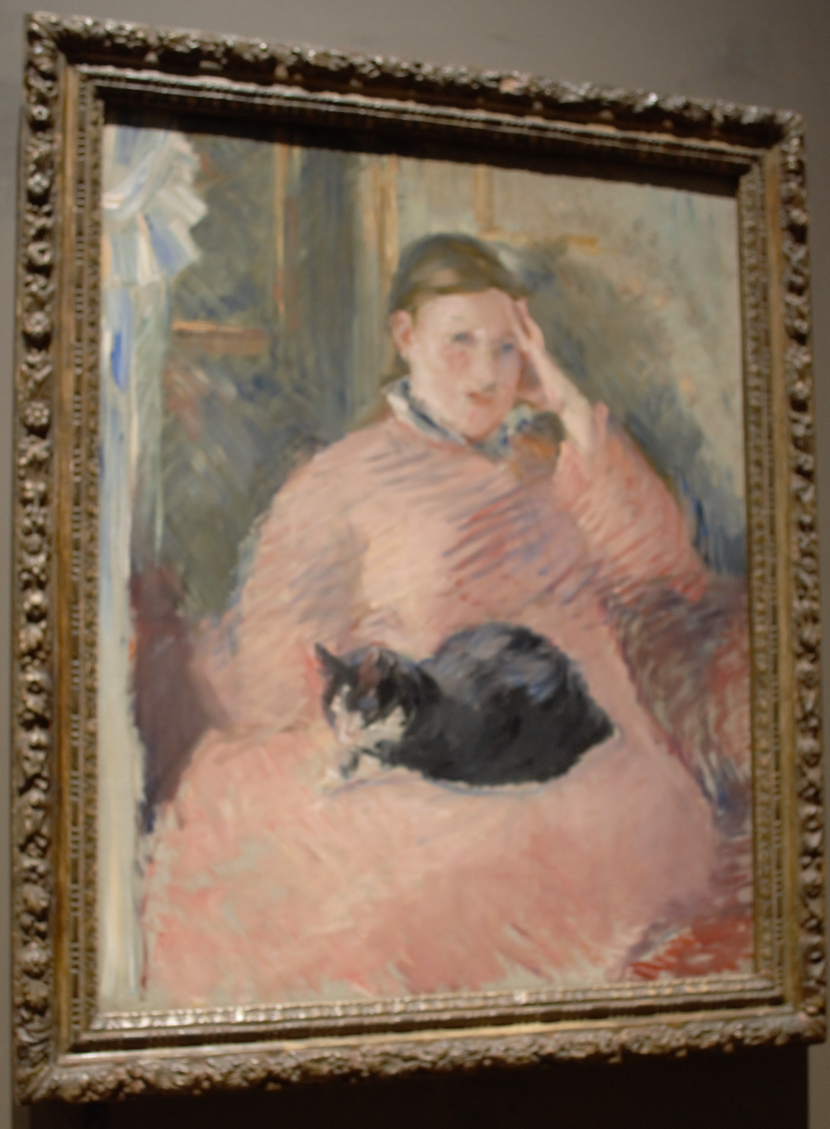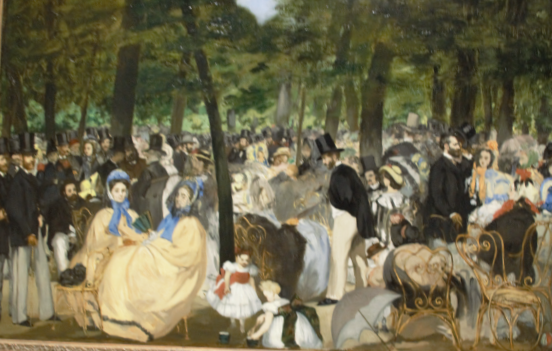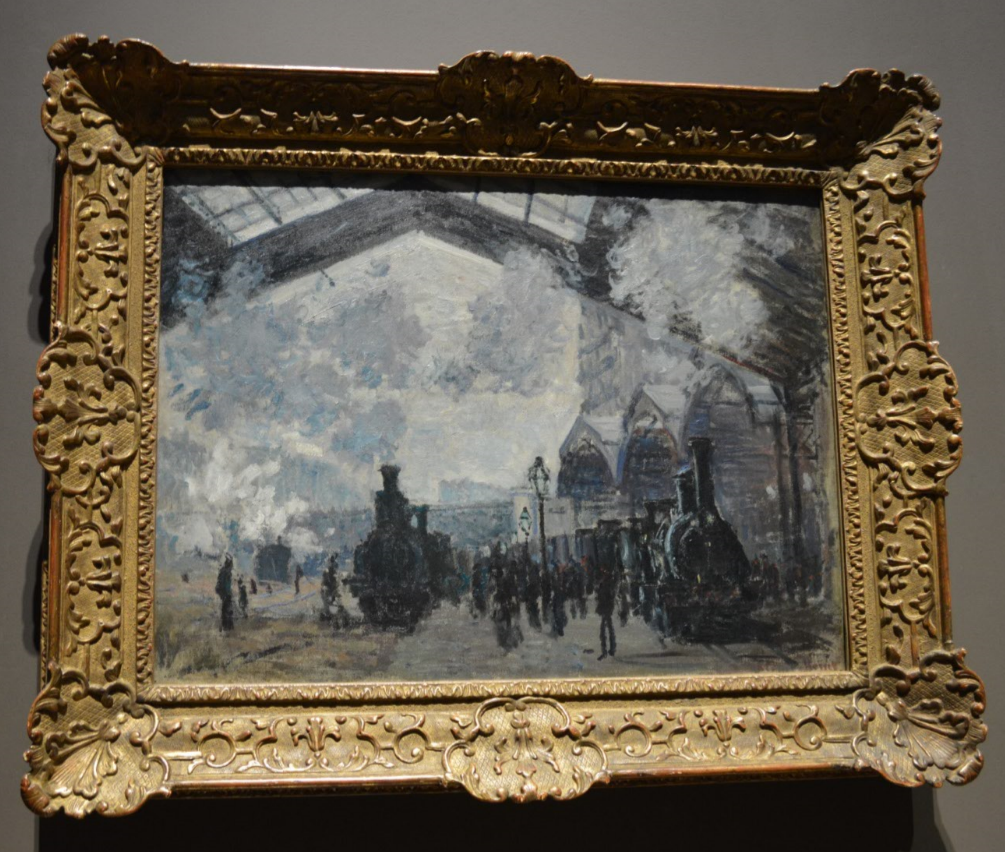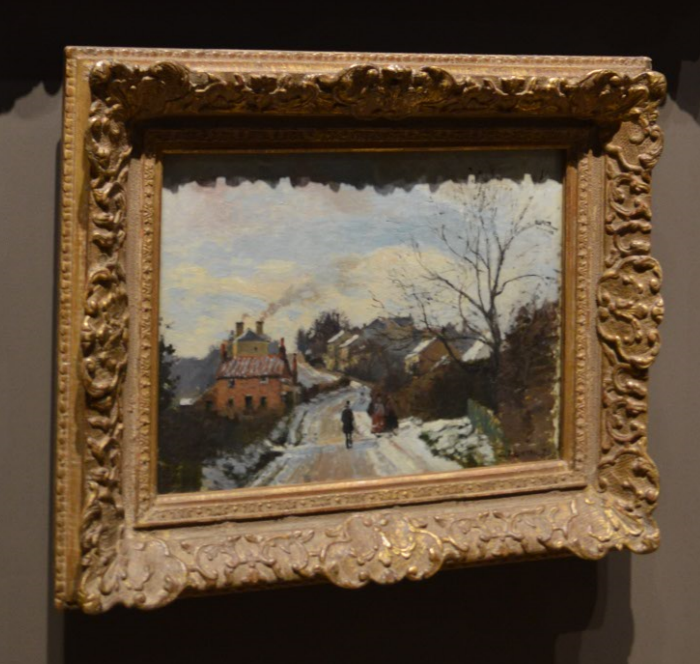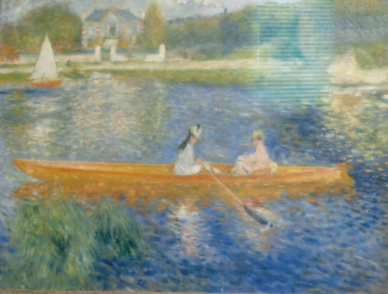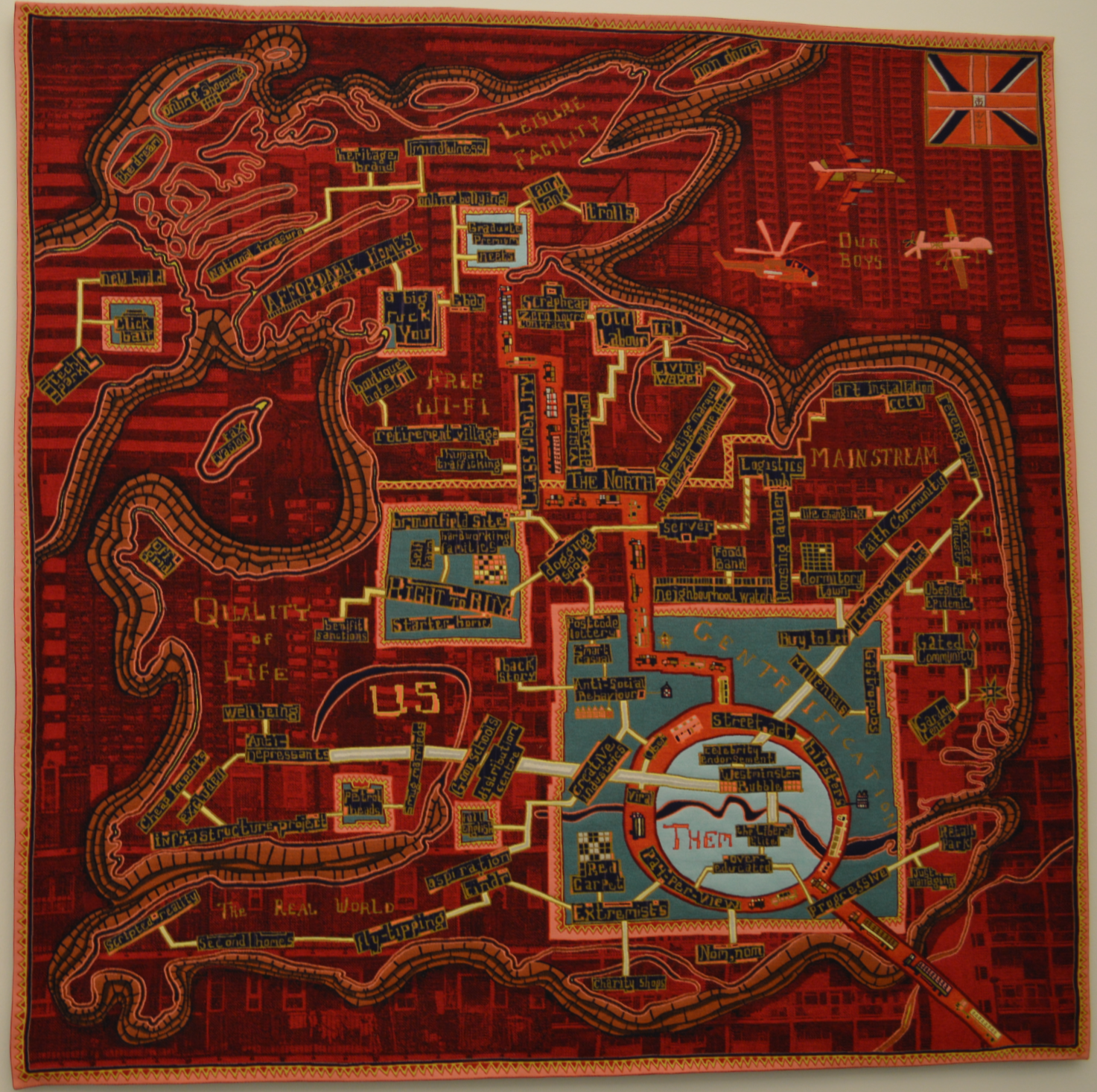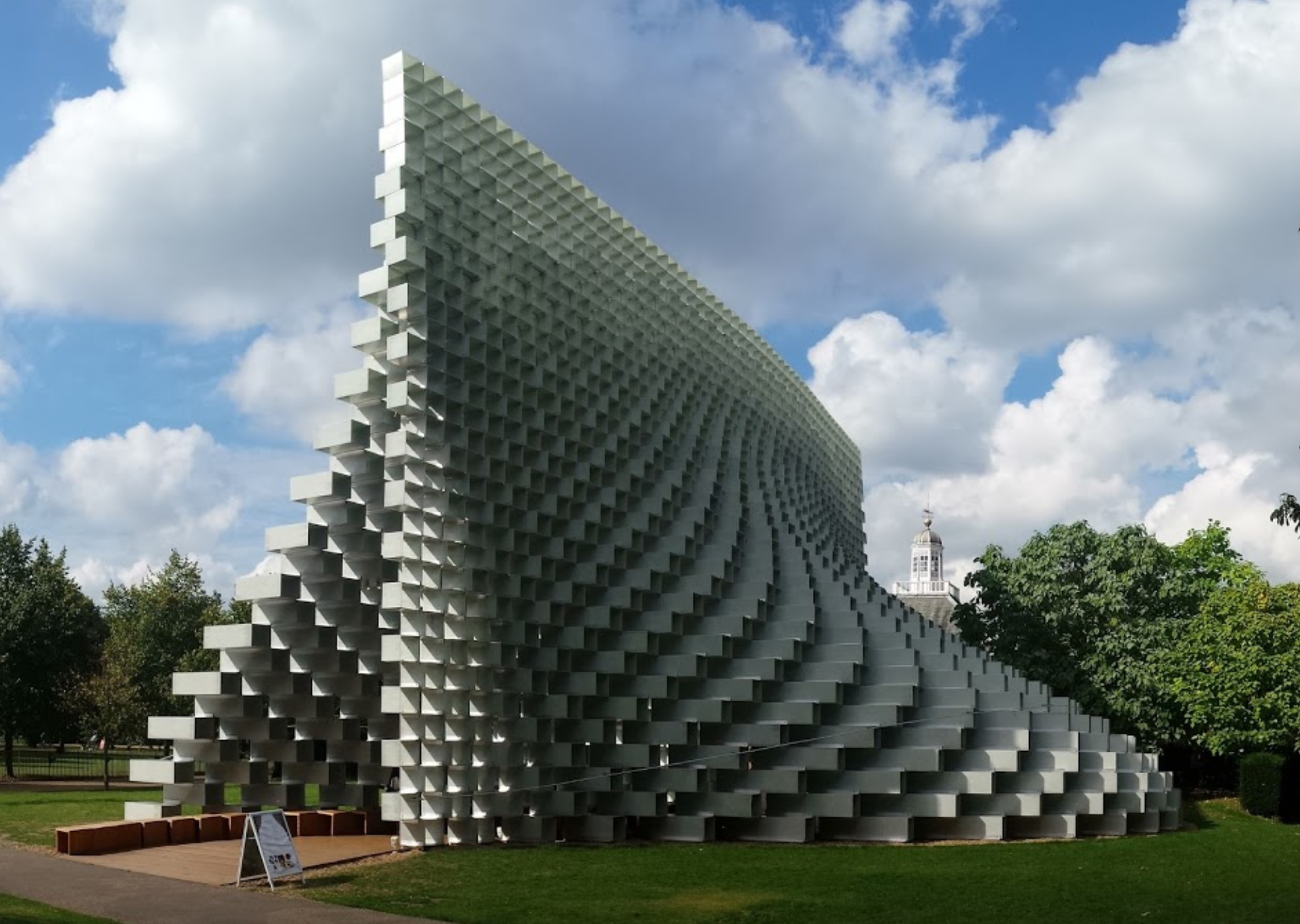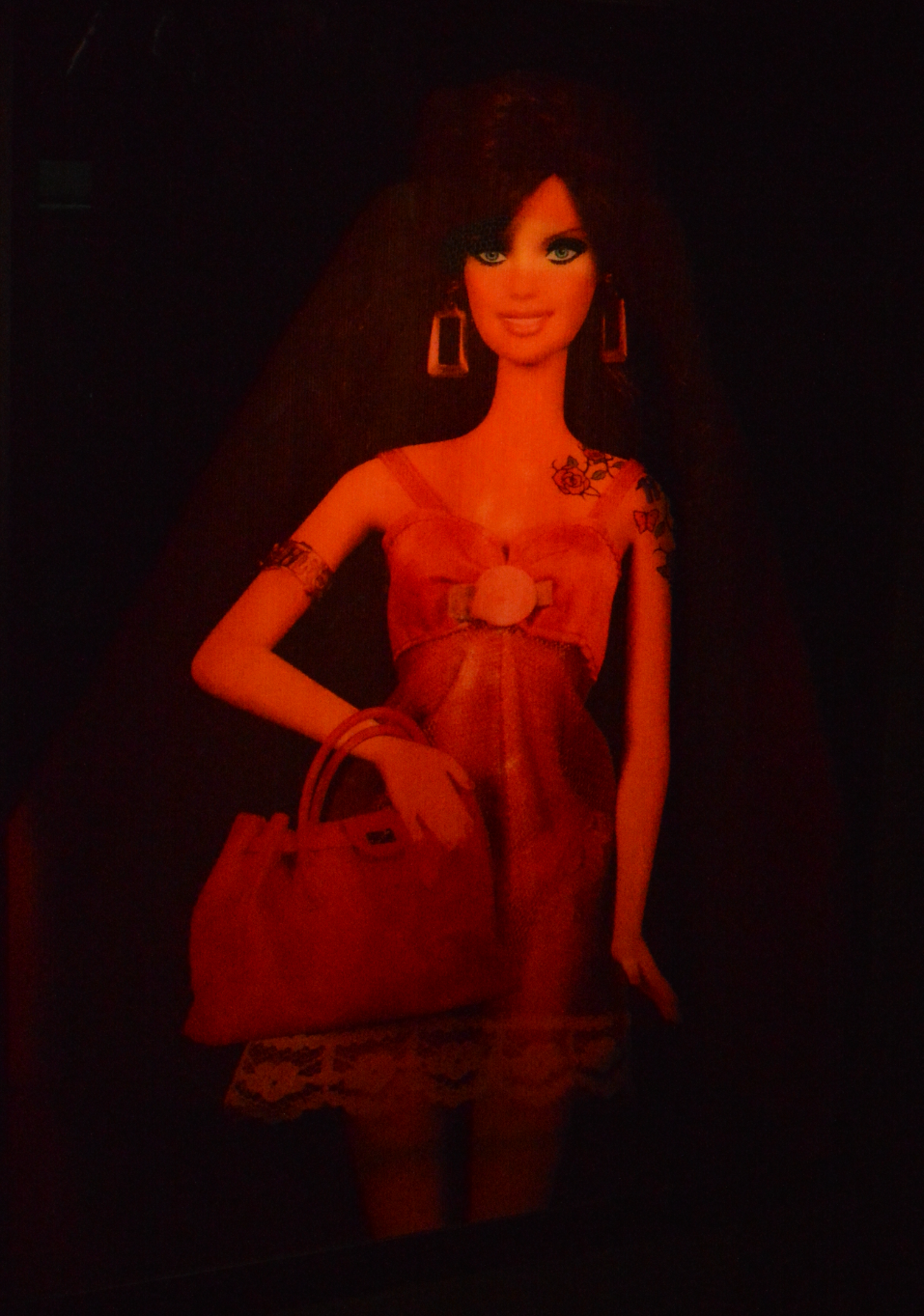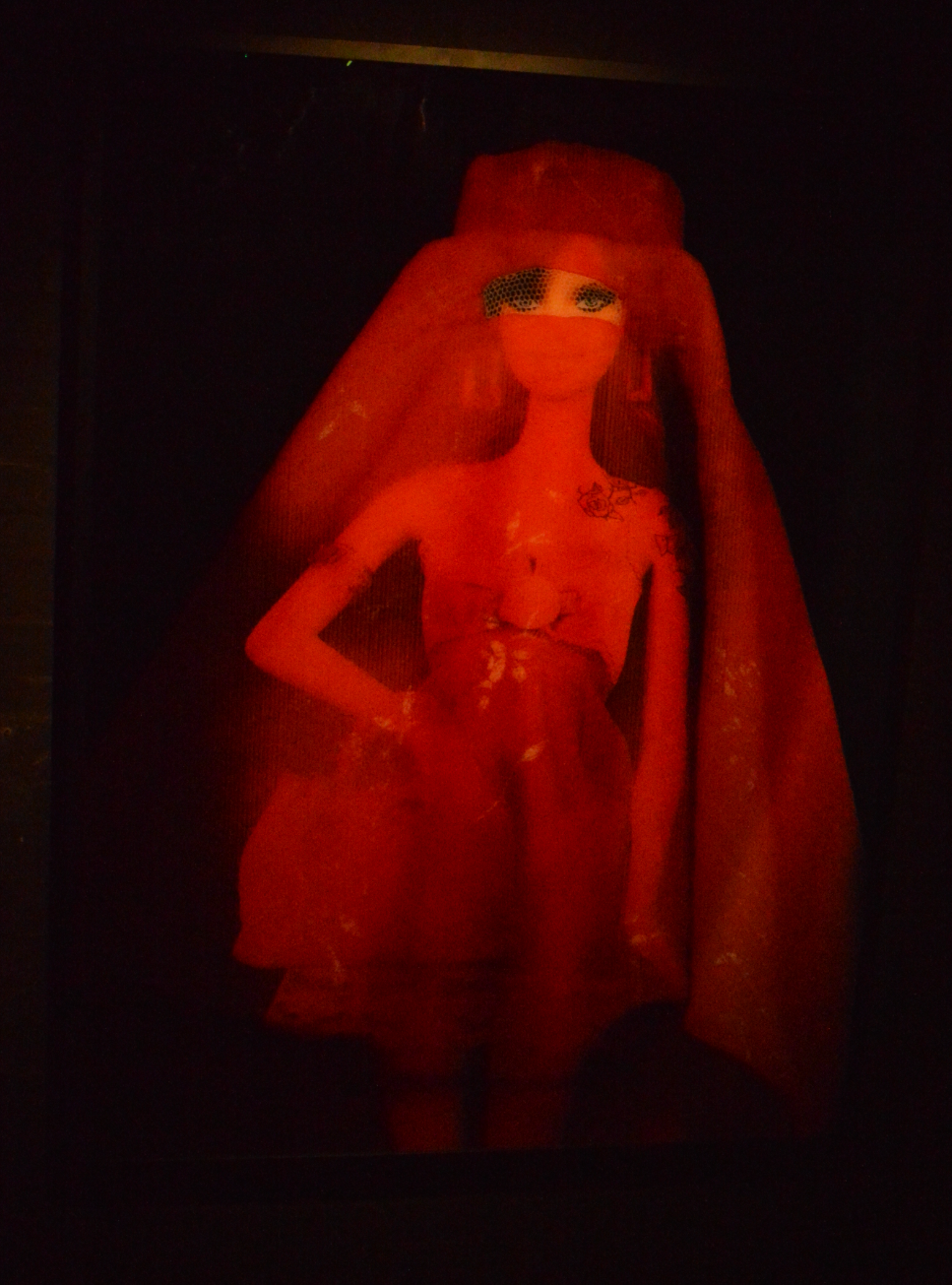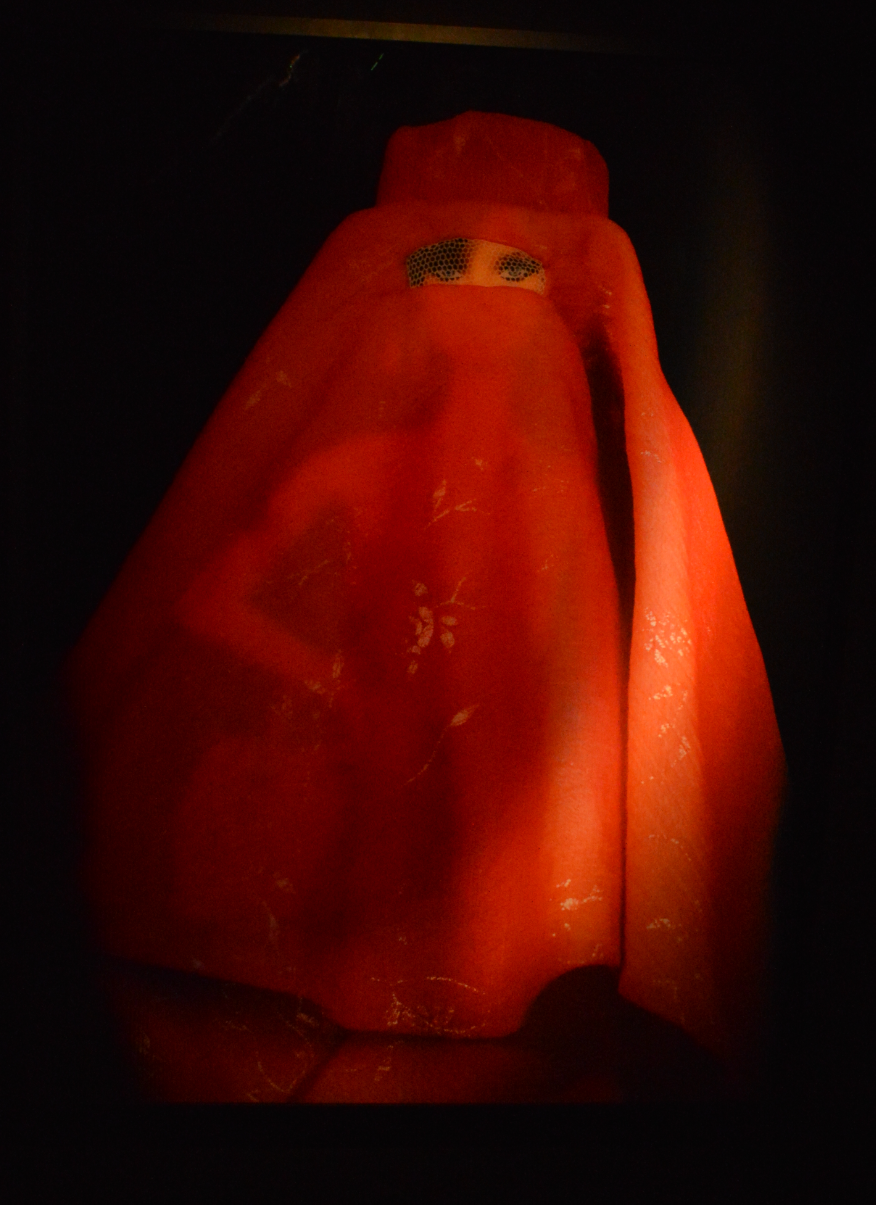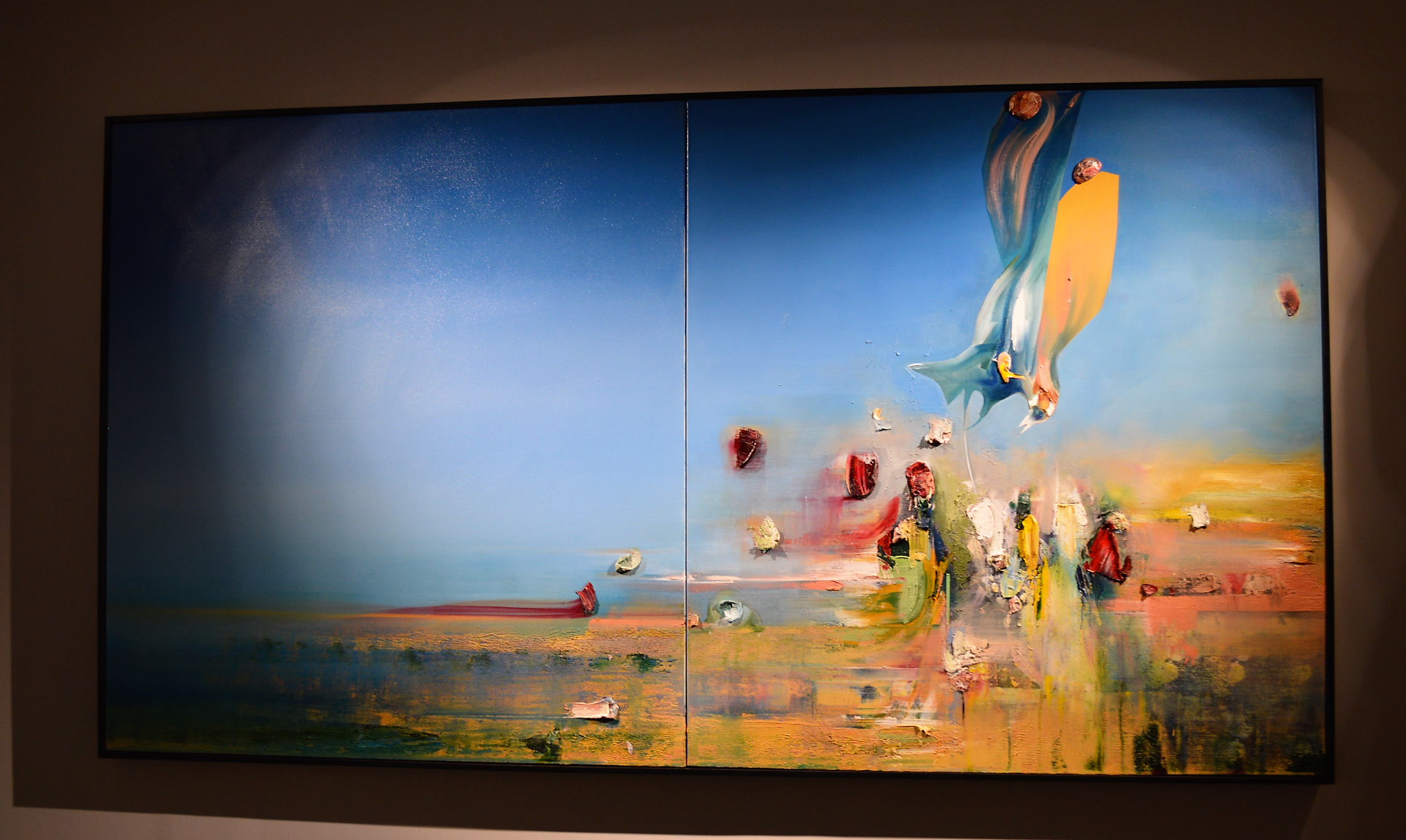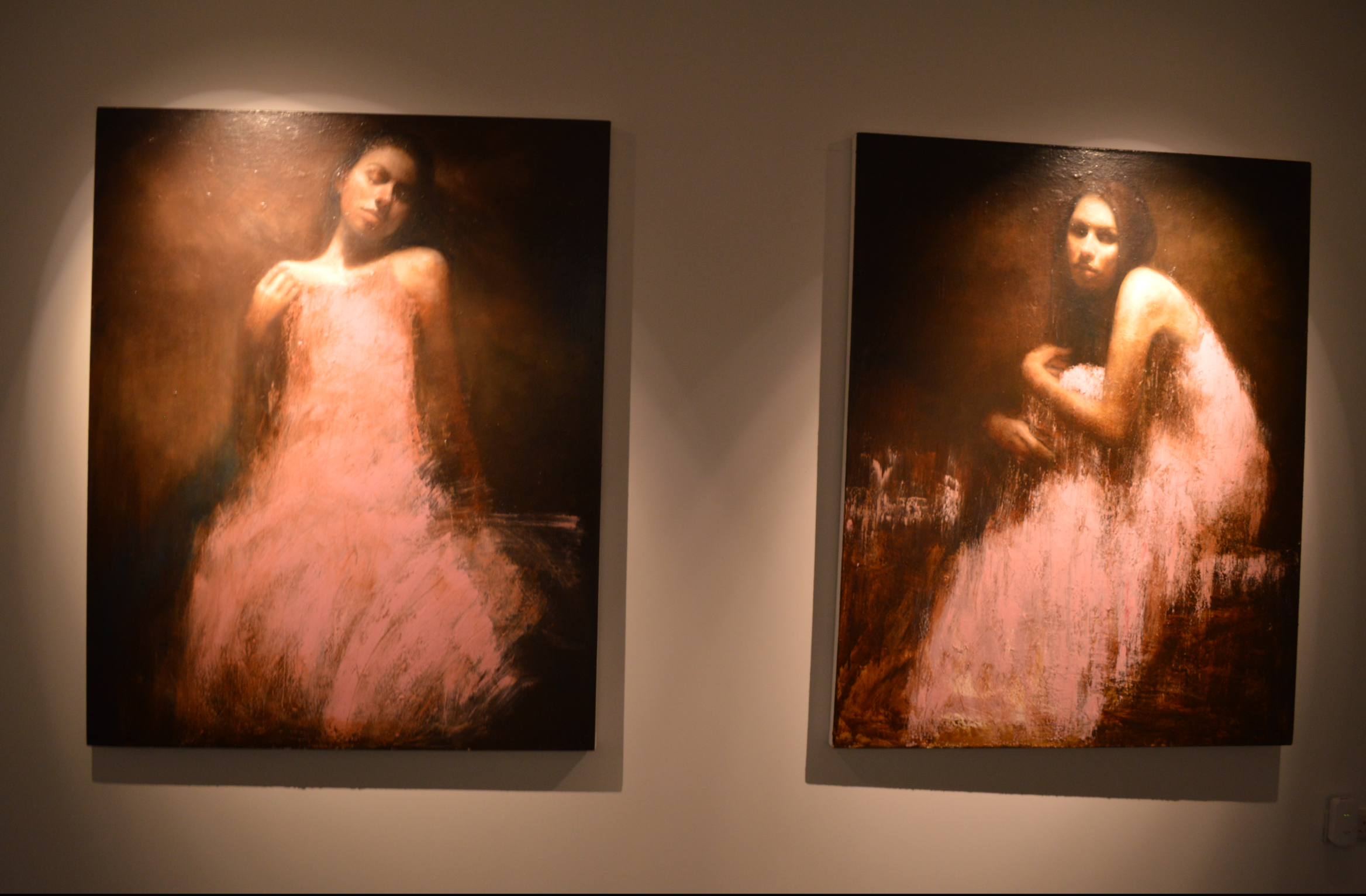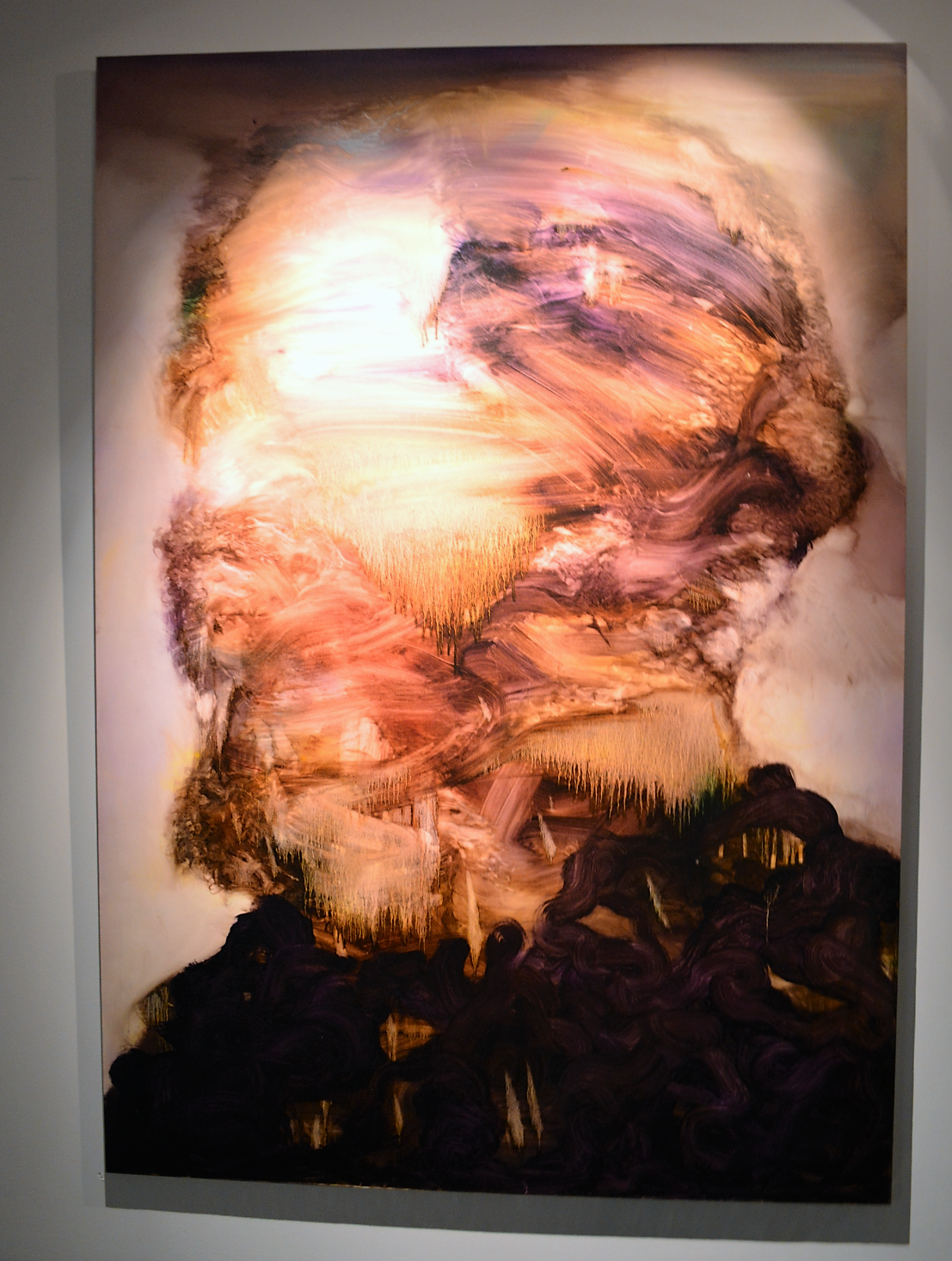Avant Garde
From Londonhua WIKI
Avant-Garde in London
by Sofia Reyes
Abstract
I am aiming to inform readers about the art avant-garde. Art is a really important part of my life since I was really little. I attended art classes since I was 6 years old. I have always like to express myself in Art. With all my background in art I never fully understood what this type of art meant. My goal is for the readers to understand what Avant-Garde is and who are some of the most famous artists in this movements. At the end, I will provide a guide to Avant-Garde Art in London. Many of this works are within huge art galleries such as National Art Gallery and Tate Modern. Some are really famous work of art and some may go unnoticed but they all impacted the world being avant-garde.
Contents
Introduction
Avant-garde means advance guard or Vanguard. In the military, they're the ones out front. They are usually small groups of particularly bold and attentive soldiers that see what's ahead and explore the terrain and seek out the enemy. But what does it mean in art? In this milestone, I wrote about what is the avant-garde, its history and some very prominent artists that have been considered avant-gardists. As my deliverable, I created a Guide to Avant-garde in London. In this guide, I provide many pictures of examples of works of art of the Avant-gardist that I mentioned before andI also included two galleries that show more recent artists.
In art, the term 'avant-garde' denotes individuals and/or small groups that in their works and actions, open up new, unexplored territory. The 'avant-gardists' can develop the capacity of impact with particular efficiency. At the center of exhibitions the unparallel energy of the international 'avant-garde' on the threshold of the new century. With Impressionism and Post-Impressionism in London and Paris, Constructivism in Russia and with individual artists such as Edvard Munch and Marcel Duchamp, they have an unprecedented potential of brilliant, creative personalities.[1]
History
As mentioned above avant-garde is the movement in the 19th-century and 20th-century that was recognized by artists who didn't follow tradition. may of the world's most prominent artists are considered avant-garde but who began using this term?
the Begining
The term avant-garde was first used in art by Henri de Saint-Simon a socialist. As the art historian Donald Egbert said: "It has never previously been pointed out, I believe, that the figurative use of the word avant-garde to denote radically progressive leaders of both art and society" [2] Saint-Simon was a French Utopian socialist and predecessor of Karl Marx. [3] In Egbert's paper, The Idea of Avant-Garde in Art and Politics, he explains how Saint-Simon believed that artists were best fitted to change the society and how in his Opinions litteraires, philosophiques et industrielle he said:
- It is we, artists who will serve you as an avant-garde, the power of the arts is, in fact, most immediate and most rapid: when we wish to
- spread new ideas among men, we inscribe them on marble or canvas. What a magnificent destiny for the arts
- is that of exercising a positive power over society, a true priestly function and of
- marching in the van [i.e. vanguard] of all the intellectual faculties! [4]
- is that of exercising a positive power over society, a true priestly function and of
- spread new ideas among men, we inscribe them on marble or canvas. What a magnificent destiny for the arts
- It is we, artists who will serve you as an avant-garde, the power of the arts is, in fact, most immediate and most rapid: when we wish to
In this simple quote, he talks about many important things. He talks about the power art, in general, has and how avant-garde has very important. Art has been a method of communication of ideas, ideas that artists what to spread and that is why it has power. Avant-garde is a type of art that spreads new ideas that are going to change society and being in this movement is a smart choice. The key word in this quote is new, as it is what defines artists in this movement and even though many artists don't follow or believe in Saint-Simon's beliefs of socialism they still consider themselves part of this movement he first began.
Avant-garde started with realism, specially Gustave Courbet. He was strongly influenced by the ideas of socialism. [5] Realism is also known as first modern art movement followed bt Impressionism and because of this we can conclude that Modern Art and avant-garde go hand in hand.
|
Avant Garde Art: What’s Going Up in the 80’s?’. Edinburgh International Festival, The Richard Demarco Gallery 1980 | |
| Info |
Joseph Beuys Tate / National Galleries of Scotland © DACS, 2017 |
|---|---|
The Movements and Protagonists
The nontraditional work of the avant-garde is influenced a lot by the environment around it. The social and political issues affect the artists and their paintings. No matter what the painter tries to express if he pushes boundaries, uses their creativity as much as possible and tries to express new ideas they can be considered part of this movement. [6] "
Avant-garde art is characterized by going against everything that is mainstream and hatred for the outdated and this is why most movements appear in reaction previous ideas. It all started with Impressionism going against Impressionism. After that, most movements appeared in reaction to Impressionism. [7] Each movement has a unique technique and pattern to oppose past ones and by intentionally confronting traditional schools their works become avant-garde. Below I wrote about some of my famous artists in this category and a little of their story.
- Impressionism
- Claude Monet
- Renoir
- Pissaro
- Manet
- Post-Modernism
- Cezanme
- Degas
- Seurat
- Van Gogh
- Cubism
- Pablo Picasso
- Duchamp
- Gaugin
- Abstract Art
- Kandinsky
- In the past a few, now soo many
- Maybe no new arists is going to be a Monet but they still have the same goals
- The art develops around the world's problems
- New techniques / New Culture
Impressionism
| Info | 1908 |
|---|---|
Guide to Avant-garde in London
Artists of the Past
The National Gallery
As previously mentioned before, avant-garde refers to groups of artists in the late 19th and early 20th centuries, specifically, those making and distributing art in a different way to their contemporaries; artists who created many works. Many of these works shown in London's National Gallery. The National Gallery contains works from almost all the artists mentioned above. They all fall into the time period of 1700-1930 (green exhibitions in the map in Level 2). Artists that incorporated new techniques and new ideas including Monet, Van Gogh, and Seurat. Three main rooms contain most of their work: Room 41, Room 43, and Room 44. I give a short explanation of the room and show pictures that I took while in the gallery.
Room 41
The works in this room demonstrate the continued vitality of painting as an artistic medium in the early 20th century. In his later years, Cézanne placed an increasing emphasis on structure and solidity, applying paint in regular, hatched brushstrokes, and using color rather than light to convey forms. Ground-breaking compositions such as his monumental Bathers won the respect of younger artists. Claude Monet had great admiration for Cézanne, whom he had known since the 1860s. Monet’s art, like that of Cézanne, evolved gradually. He explored light and color in series of paintings of specific subjects, undertaken at precise times of the day and recording particular atmospheric conditions. In his garden at Giverny in Normandy, Monet painted near-abstract pictures where forms seem to dissolve to the point of disintegration. These echo the chaos of the First World War when major artistic revolutions were underway.
Room 43
In the 1880s some of the Impressionist artists were beginning to enjoy success. The cohesiveness of the initial group had waned, and they were exploring new ways of painting. Camille Pissarro began to work in the new style invented by Georges Seurat, whom he met in 1885. Seurat’s approach, based on scientific color theory, involved using countless tiny dots of pure color, placed in close proximity to each other. When viewed at a distance, the eye blends these individual marks into areas of solid color: a technique called divisionism or pointillism.
Room 44
In the 1860s Edouard Manet shocked exhibition visitors in Paris with his unflinching scenes of modern life, painted boldly and using sober colors. His radical style made a profound impact on many artists. [8] In the years to come, Claude Monet, Pierre-Auguste Renoir, Berthe Morisot, Alfred Sisley and other young painters in Paris would display an even stronger interest than Manet in the informal aspects of contemporary life. These artists, who often worked in the open air along the river Seine, experimented with flickering brushstrokes and bright colors to capture the fleeting effects of light. They exploited technical advances, such as oil paint in tubes that could be easily transported. As true avant-gardist, they were ahead of the traditional painters using new techniques.
Tate Modern
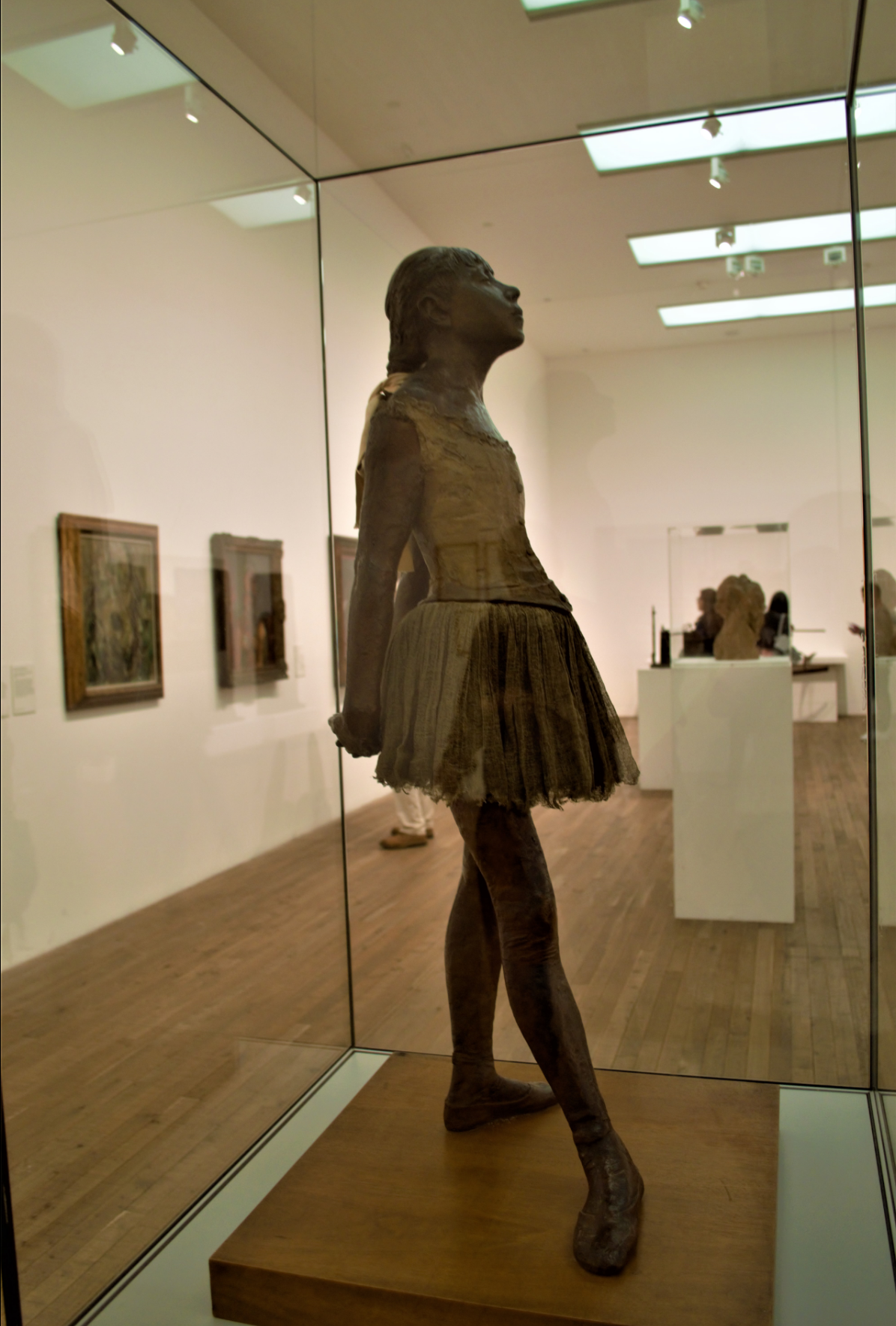 1880–1 | |
| Display Room | Studio Practice (Room 2) |
|---|---|
Little Dancer Aged Fourteen
Degas
This sculpture was created by Degas. The model for this sculpture was a ballet student. Degas first made a reddish-brown wax sculpture of her in the nude. Then, aiming for a naturalistic effect, he dressed it in clothing made of real fabrics. When the wax sculpture was first exhibited, contemporaries were shocked by the unprecedented realism of the piece. [9] He created a sculpture like no one had seen before. It may look like a simple sculpture of a girl but Degas's Little Dancer Aged Fourteen caused an outcry when she was first exhibited at the 1881 impressionist exhibition in Paris. [10] The figure was described variously as 'repulsive' and 'a threat to society'. He went outside tradition to portrait a girl as a dancer (also seen as a prostitute).[11]
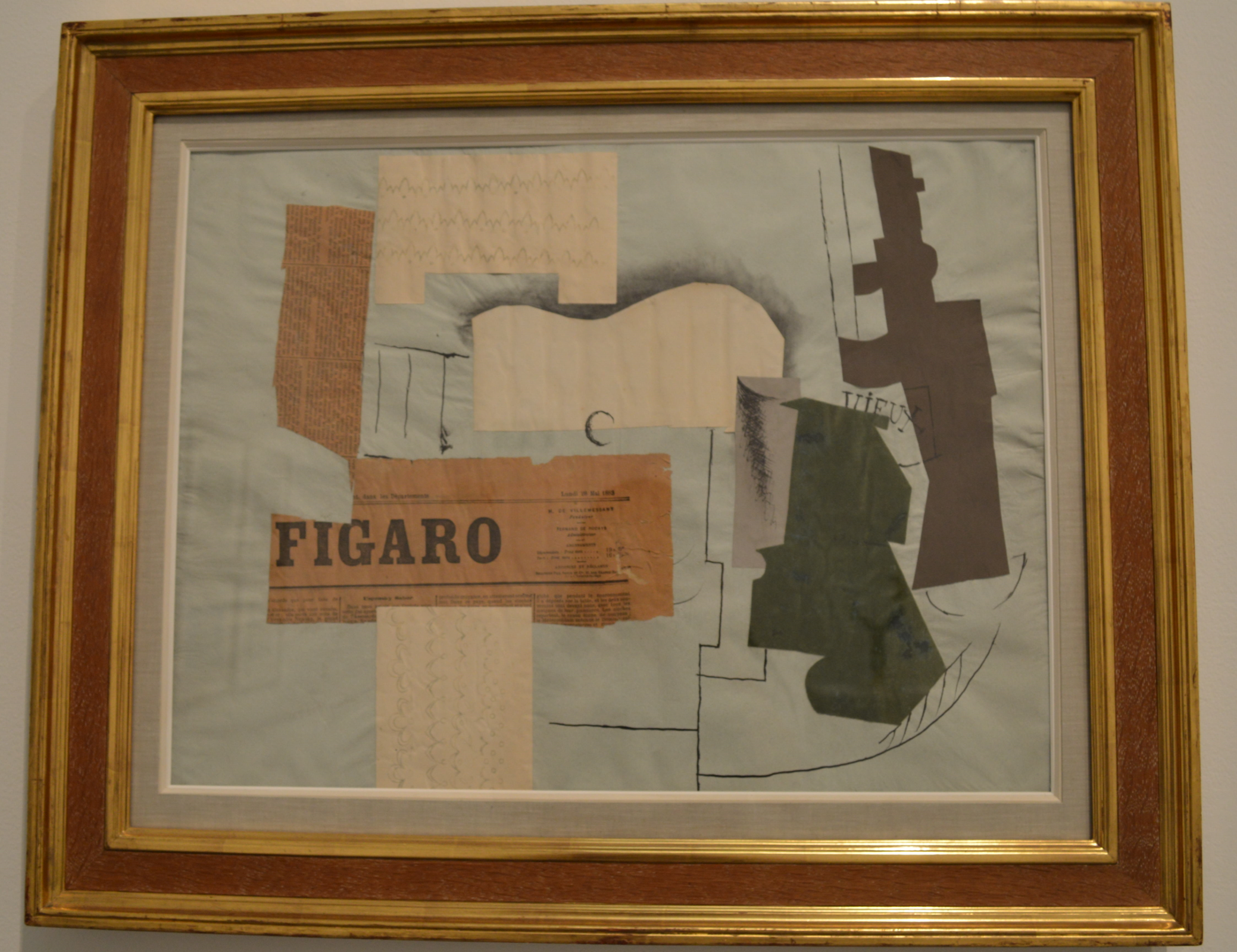 1913 | |
| Display Room | Collage (Room 2) |
|---|---|
Bottle of Vieux Marc, Glass, Guitar and Newspaper
Pablo Picasso
Bottle of Vieux Marc, Glass, Guitar and Newspaper is a small papier collé by Pablo Picasso, produced in 1913. It depicts a series of objects and paper fragments clustered on a table, the oval edge of which has been loosely drawn in the lower right of the composition. The abstracted forms of a guitar, glass, and bottle of the wine cut from white, gray and black colored papers are together with drawn lines indicating other elements of each object’s shape.[12] The objects are shown from several perspectives: while the guitar and table appear to be seen from above; the bottle and glass are shown from the side. Picasso uses this new method of collage in controversy to traditional art.
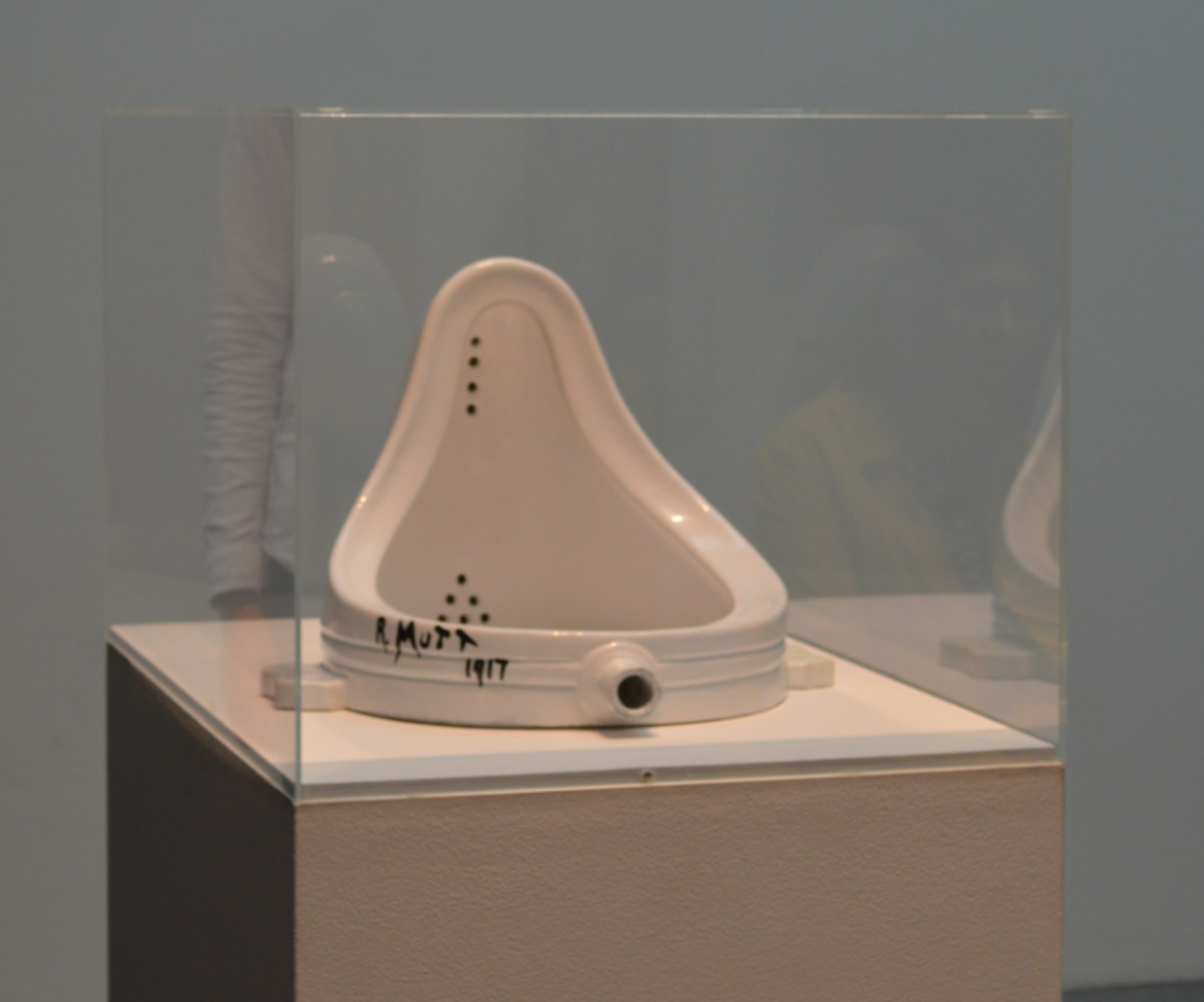 1917, replica 1964 | |
| Display Room | Explore Materials and Objects (Room 4) |
|---|---|
Fountain
Duchamp
"Fountain" is one of Duchamp’s most famous works and is widely seen as an icon of twentieth-century art. The original, which is lost, consisted of a standard urinal, usually presented on its back for exhibition purposes rather than upright, and was signed and dated ‘R. Mutt 1917’. Tate’s work is a 1964 replica and is made from glazed earthenware painted to resemble the original porcelain. The signature is reproduced in black paint. Fountain has been seen as a quintessential example, along with Duchamp’s Bottle Rack 1914, of what he called a ‘readymade’, an ordinary manufactured object designated by the artist as a work of art (and, in Duchamp’s case, interpreted in some way).
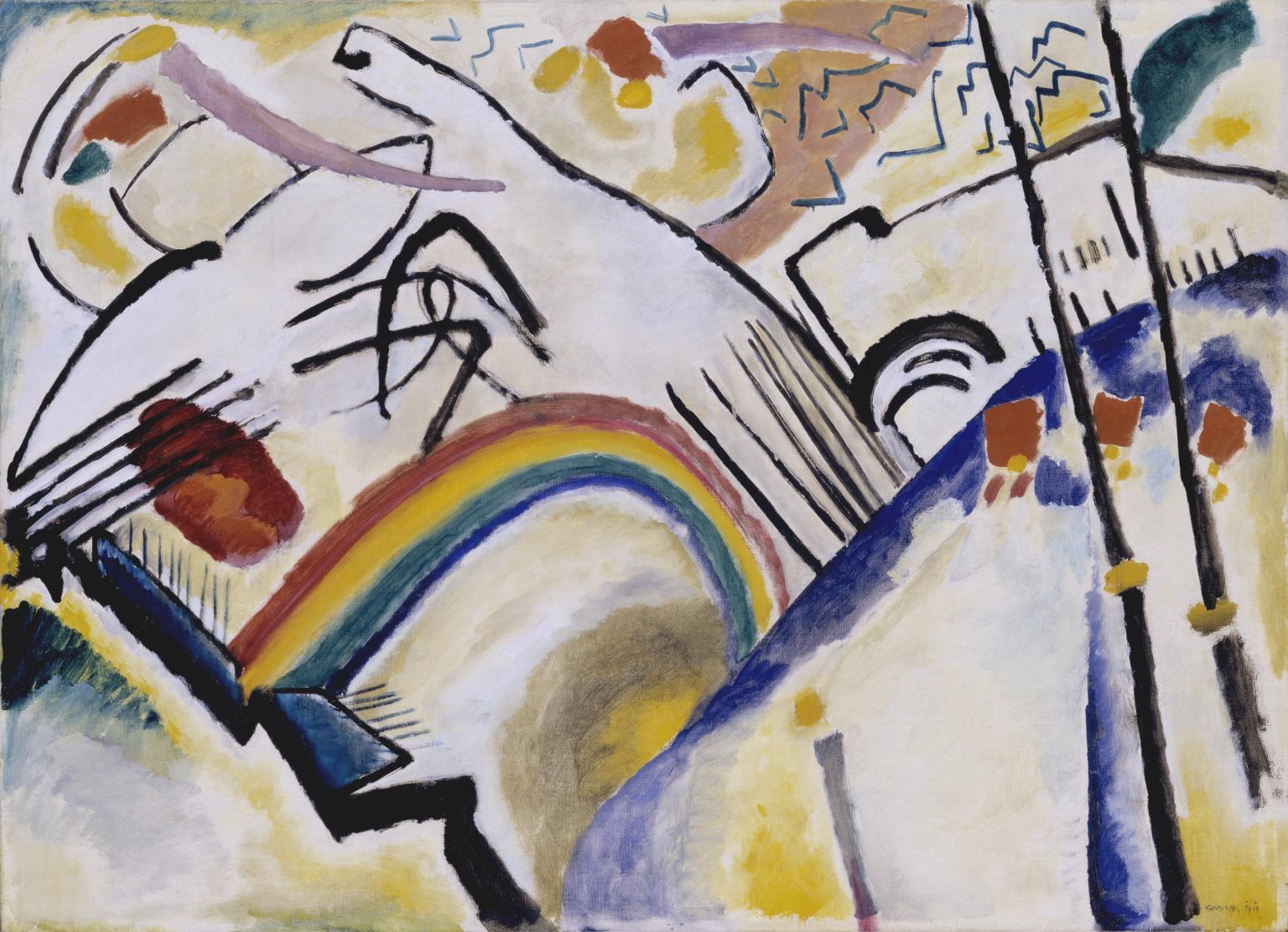 1910–1 | |
| Display Room | Level 2: Start Display |
|---|---|
Cossacks
Wassily Kandinsky
Kandinsky believed that abstract paintings could convey spiritual and emotional values simply through the arrangement of colours and lines. Cossacks was made during a transitional period, when he retained some representational elements, such as the two Russian cavalrymen in tall orange hats in the foreground of the painting. Kandinsky considered these as points at which the images could be registered, rather than the true content of the painting.
Galleries from the Present
Serpentine Galleries
The Serpentine Gallery is one of London's most popular art venues showing modern and contemporary art work. It is located in the centre of Kensington Gardens. It has two venues on either side of the Serpentine lake: he Serpentine Gallery and the Serpentine Sackler Gallery, designed by Zaha Hadid Architects.
Seasonal Shows
This two galleries change seasonally and have eight shows per year. I focused on Summer 2017 summer shows: The Most Popular Art Exhibition Ever! by Grayson Perry and A Series Of Utterly Improbable, yet Extraordinary Renditions by Arthur Jafa.
Perry’s abiding interest in his audience informs his choice of universally human subjects. Working in a variety of traditional media such as ceramics, cast iron, bronze, printmaking and tapestry, Perry is best known for his ability to combine delicately crafted objects with scenes of contemporary life. His subject matter is drawn from his own childhood and life as a transvestite, as well as wider social issues ranging from class and politics to sex and religion. [13]
|
Gallery #1 | |
| location | Hyde Park, London |
|---|---|
Pavillion
Each year, they commission an architect to create a summer pavilion. The first one was created by Zaha Hadid in 2000 and since then there has being one every year. In 2016, the temporary venue was created by Danish architect Bjarke Ingels. He created this venue with fiberglass frame. The pyramid of blocks kind of resembles a glacial crevasse.
For the 2017 Serpentine Pavillion was designed by Francis Kere. He was born in Burkina Faso, where he got the inspiration for this pavilion. He was inspired the tree that serves as a central meeting point for life in this village, his home. He used a new artistic and architectonic method into the design and he seeks to connect its visitors to nature and each other. An expansive roof, supported by a central steel framework, mimics a tree's canopy, allowing air to circulate freely while offering shelter against London rain and summer heat. He is trying to portrait a tree and how gathering under it was refreshing. He also portraits culture as he explains that he uses indigo blue because it is a key color for his culture. He invites everyone in to admire his work of art and new design. Just as this artist, every artist that creates a pavilion uses a new technique in his or er design. They can be considered avant-gardists because of this new methods.
Unit London
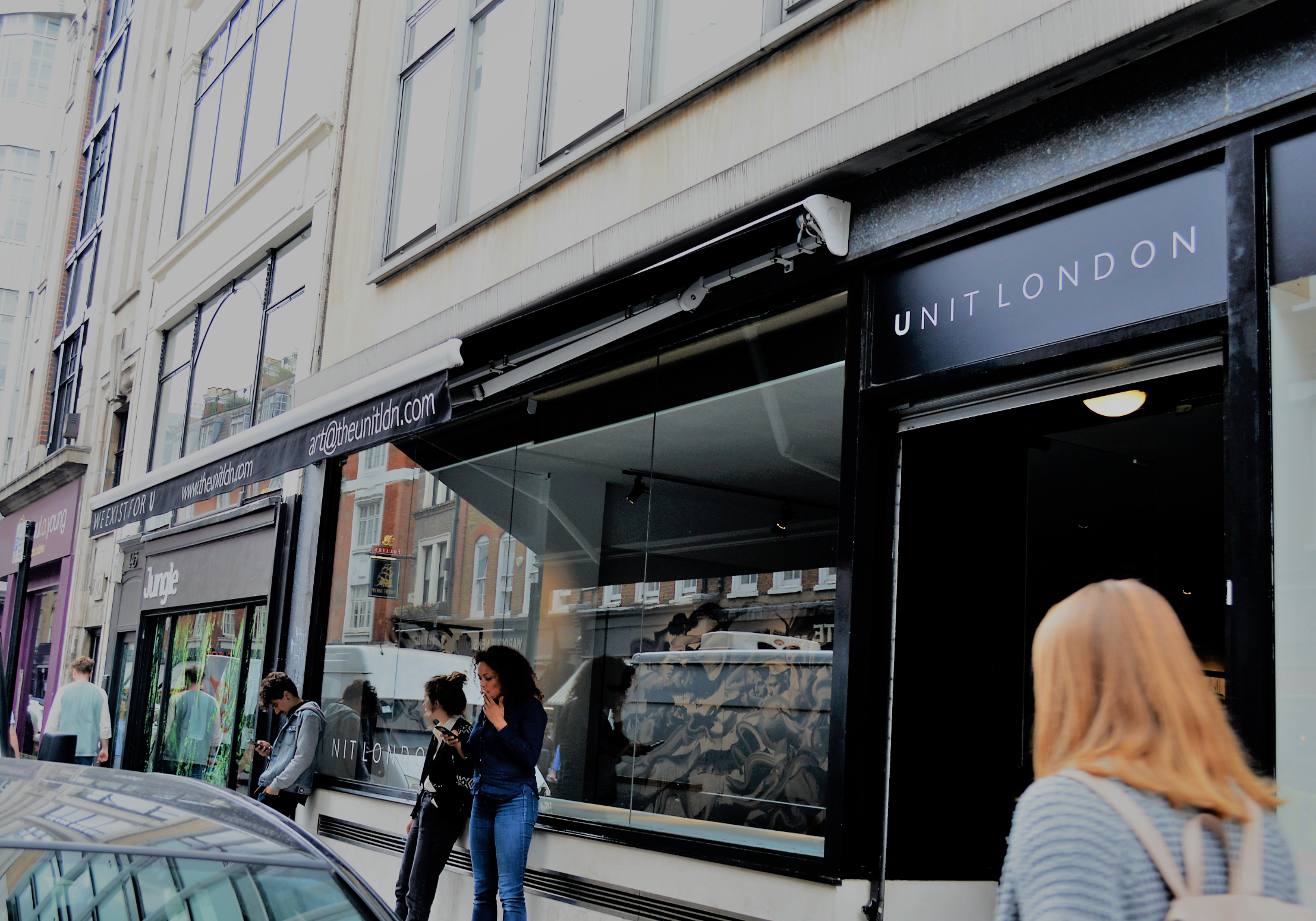 1917, replica 1964 | |
| Location |
147-149 WARDOUR STREET SOHO, LONDON W1F 8WD 11AM - 7PM, EVERY DAY |
|---|---|
Located in Soho, classified by tourists as one of the most Avent-Garde neighborhood, [14] is a spot for shadiness and cheap food and music, stand-up comedy and cabaret performances. This is a great area to experience different forms of culture, from cuisine to clubs. Unit London is located right it the middle of all this. Founded in 2013 by two young artists, Unit London was born from a desire to break down the barriers of elitism and to include people in the contemporary art world - whether they be enthusiasts, first-timers, new collectors, or seasoned collectors and institutions - we strongly believe that everybody should be able to enjoy the world's most amazing art.
This Gallery is very inclusive and is open 7 days a week until the early evening. They provide a space for artists and
We have always wanted to provide a platform for the world's most exciting talent to showcase their work to the widest possible audience. We don't believe that incredible work should be reserved for only the select few. We are strong believers in the power of online, and we use digital and social media to broadcast our artists and their work to audiences all over the globe. [15]
In selecting our artists, we put talent and ability before reputation, status, or profile. We therefore represent artists spanning a broad range of different ages, races, cultures and backgrounds. The common denominator between them all is undeniable talent.
 2017 | |
| MAterial |
Fibreglass life-cast with prismatic finish. 120 x 52 cm |
|---|---|
Most Artists in this gallery are multi-talented urban artist whose unique aesthetic and technic has made them famous. A great example of this is the artists is Schoony. His brilliance has brought the art world by storm and his hyperrealist sculptures question war, mortality and contemporary society. PRISMATIC BRUISER is one of his most famous sculptures. It reminds me of Degas's
Schoony’s background is rooted in special effects and prosthetics for the film industry, with his career spanning over twenty-five years. Since the age of fifteen he has worked on over a hundred films, his work and reputation for high class pioneering techniques has reached the far corners of the world.
He took the plunge into a new career as an artist to share his passion for life cast sculpture. Schoony exploded onto the London art scene in 2008 at Mutate Britain’s “One Foot Under the Grove”, one of the most pioneering street art exhibitions to date. His most iconic life cast sculpture “Boy Soldier” first unveiled outside the houses of parliament as an anti-war protest, is now a household name, featured in Hollywood blockbusters and collected internationally.
Since then Schoony has experimented with many different themes, examining capitalism and pop culture, with his keen eye and technical ability Schoony remains one of the few artists working within the life-cast discipline. Schoony’s career has gone from strength to strength, exhibiting widely throughout Europe and the US. His work has won him critical acclaim from the Times, The Independent and ArtNet News, he is also featured on Artsy.
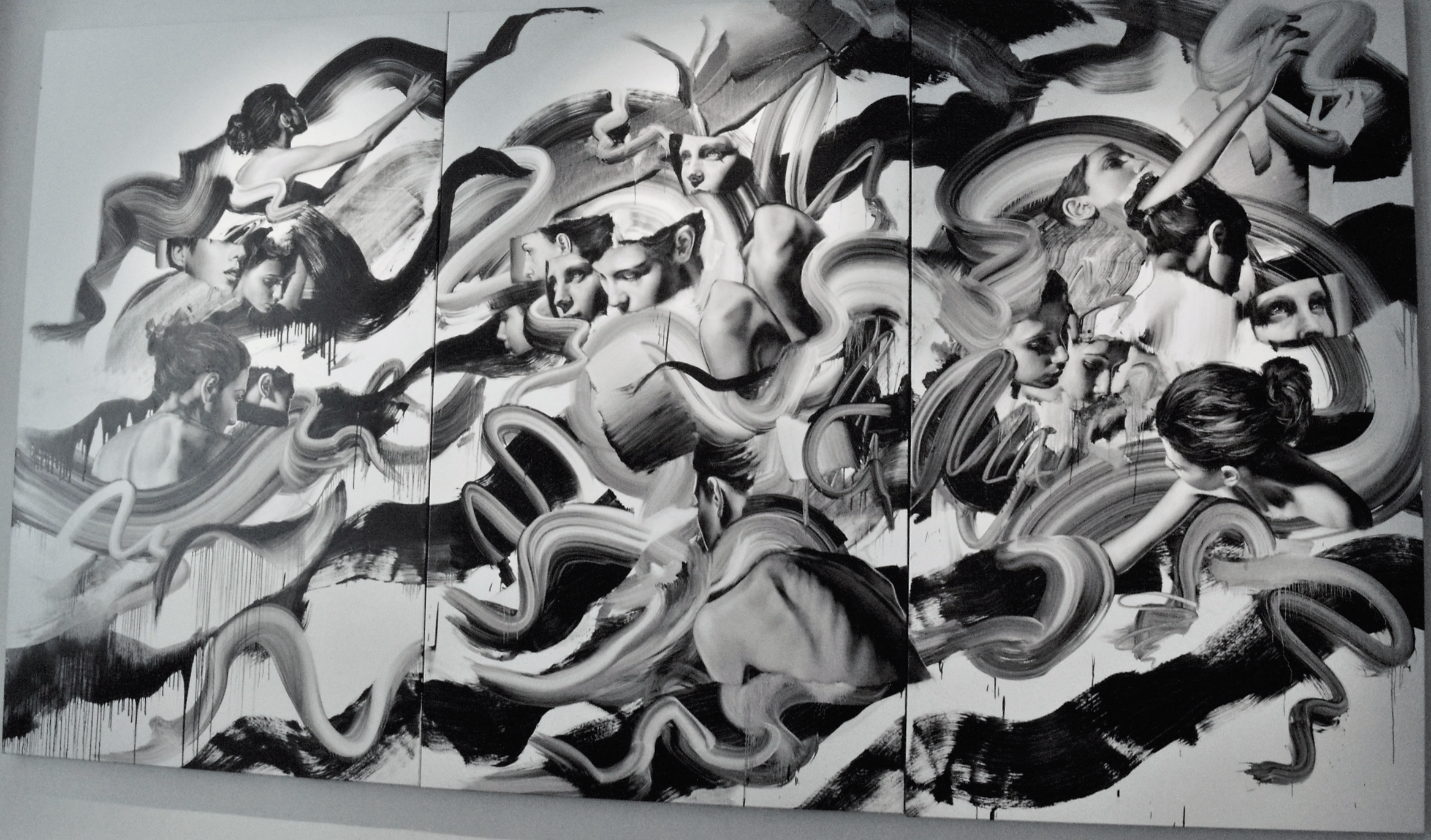 2017 | |
| Material |
Oil on canvas. 120 x 52 cm |
|---|---|
Tom French is a highly collectible and well-regarded British artist whose powerful monochromatic canvases are driven by his efforts to engage with the subconscious, and a rigorous pursuit of truth.
French’s paintings are a visual discourse on Dualism, a philosophy that posits that the mind and the brain are not identical, that the mind is the seat of consciousness and the brain the seat of intellect. His concerns with the duality of the physical and the metaphysical, are reflected in the double images that populate his artwork. Faces, figures and skulls repeat and shadow one-another, there are echoes of Rorschach’s psychometric tests in the mirroring and the monochromatic palette, and intuitive, gestural brushstrokes tap the subconscious.
Tom French’s artistic and intellectual investigations into the human psyche are an attempt to understand the flux and flow of our emotional reactions and reflections on our subjective self. His research has taken him through the Beat Generation novels and poems of William Burroughs, the Surrealist essays of Andre Breton, the work of Dada pioneer Max Ernst and early experiments in psychotherapy.
In his pursuit of truth French chooses a monochrome palette, the simplicity of which allows for narrative without distraction and for the play of light and dark to expand in unexpectedly haunting ways.
French has had critically acclaimed solo exhibitions both in the UK and the US, collaborations have included the cover artwork for a release of the soundtrack to cult movie Donnie Darko.
"Each scene is a snapshot of a story, with a dynamic between the characters working on various levels, which ties into the bigger picture; there's much more to these images than illusion alone." Tom French
Conclusion
In this section, provide a summary or recap of your work, as well as potential areas of further inquiry (for yourself, future students, or other researchers).
References
- ↑ Bischoff, U., Lozo, K., Wit, G. D., & Theerlynck, S. (2016). The power of the avant-garde: now and then. Tielt: Lannoo .
- ↑ Egbert, D. (1970). The Idea of avant-garde in Art and Politics. Leonardo, 3(1), 75-86. doi:10.2307/1572057
- ↑ Egbert, D. (1970). The Idea of avant-garde in Art and Politics. Leonardo, 3(1), 75-86. doi:10.2307/1572057
- ↑ T. (n.d.). Avant-garde – Art Term. Retrieved June 18, 2017, from http://www.tate.org.uk/art/art-terms/a/avant-garde
- ↑ Szabolcsi, Miklós. “Avant-Garde, Neo-Avant-Garde, Modernism: Questions and Suggestions.” New Literary History, vol. 3, no. 1, 1971, pp. 49–70. JSTOR, www.jstor.org/stable/468380.
- ↑ T. (n.d.). Avant-garde – Art Term. Retrieved June 18, 2017, from http://www.tate.org.uk/art/art-terms/a/avant-garde
- ↑ Szabolcsi, Miklós. “Avant-Garde, Neo-Avant-Garde, Modernism: Questions and Suggestions.” New Literary History, vol. 3, no. 1, 1971, pp. 49–70. JSTOR, www.jstor.org/stable/468380.
- ↑
- ↑ T. (n.d.). 'Little Dancer Aged Fourteen', Edgar Degas, 1880-1, cast c.1922. Retrieved June 19, 2017, from http://www.tate.org.uk/art/artworks/degas-little-dancer-aged-fourteen-n06076
- ↑ T. (n.d.). 'Little Dancer Aged Fourteen', Edgar Degas, 1880-1, cast c.1922. Retrieved June 19, 2017, from http://www.tate.org.uk/art/artworks/degas-little-dancer-aged-fourteen-n06076
- ↑ T. (n.d.). Avant-garde – Art Term. Retrieved May 16, 2017, from http://www.tate.org.uk/art/art-terms/a/avant-garde
- ↑ T. (n.d.). 'Bottle of Vieux Marc, Glass, Guitar and Newspaper', Pablo Picasso, 1913. Retrieved May 16, 2017, from http://www.tate.org.uk/art/artworks/picasso-bottle-of-vieux-marc-glass-guitar-and-newspaper-t00414
- ↑ Grayson Perry: The Most Popular Art Exhibition Ever! (2017, June 08). Retrieved June 18, 2017, from http://www.serpentinegalleries.org/exhibitions-events/grayson-perry-most-popular-art-exhibition-ever
- ↑ Neighborhood Guide to London. (2016, December 23). Retrieved June 17, 2017, from https://www.bohemiantrails.com/5-neighborhoods-of-london-avant-garde-traveler/
- ↑ About Us. (n.d.). Retrieved June 17, 2017, from http://theunitldn.com/about-us/


